

The dark history of North Brother Island, New York’s forbidden place
- Post author By Greg Young
- Post date July 9, 2021
- 12 Comments on The dark history of North Brother Island, New York’s forbidden place
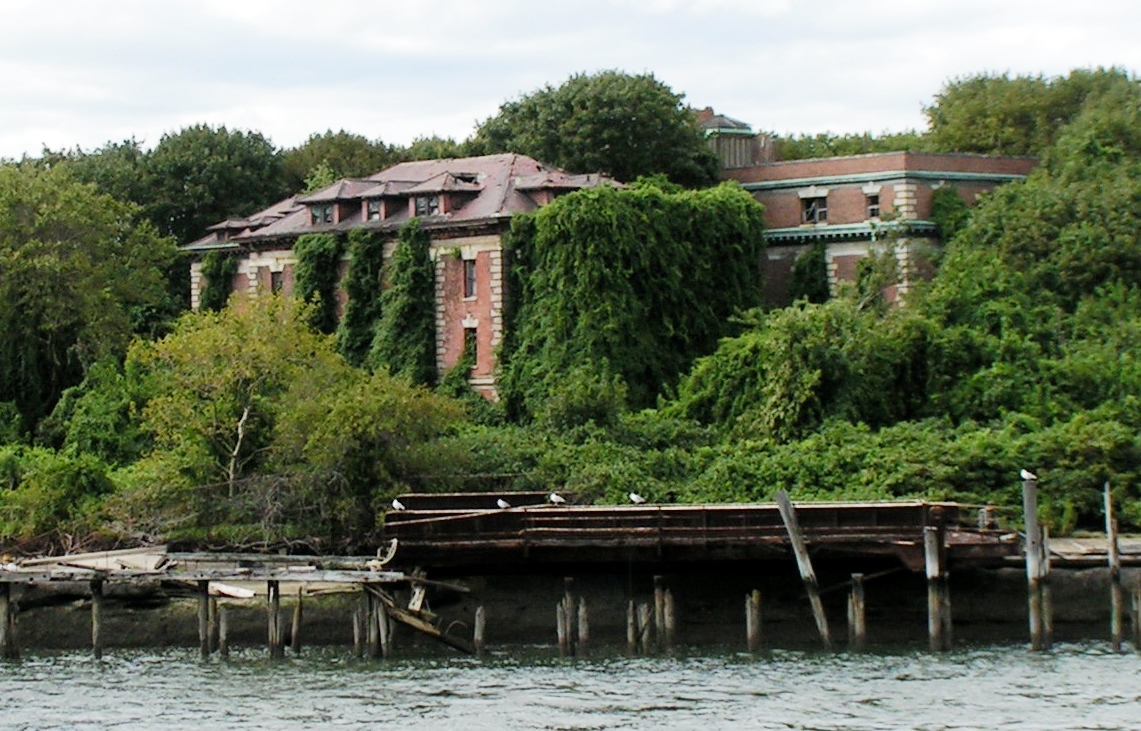
PODCAST There are two mysterious islands in the East River with a human population of zero.
North Brother Island and the smaller South Brother Island sit near the tidal strait known as Hell Gate , a once-dangerous whirlpool which wrecked hundreds of ships and often deposited the wreckage on the island’s quiet shore.
In the 1880s North Brother Island was chosen as the new home for Riverside Hospital , a quarantine hospital for New Yorkers with smallpox, tuberculosis and many more hideous illnesses.
The hospital is long gone but ruins peaking out from the canopy of trees hint at a shocking story of mystery and woe.
Greg takes the reigns in this episode and leads you through the following tales featuring North Brother Island:
— A bizarre incident — involving a body found in the waters off the island — which first put the place on the map;
— The experiences of “ Lighthouse Dan” ;
— The nightmarish city policy of ‘forced exile ‘ to battle the spread of disease in the city’s poorest quarters;
— The tragic crash of the General Slocum steamship;
— The complicated struggles of Mary Mallon, aka Typhoid Mary ;
— The implausible tale of a 1950s rehab center for teenage drug addicts.
PLUS : How to see the ruins of North Brother Island without stepping foot there
Listen Now – North Brother Island: New York’s Forbidden Place
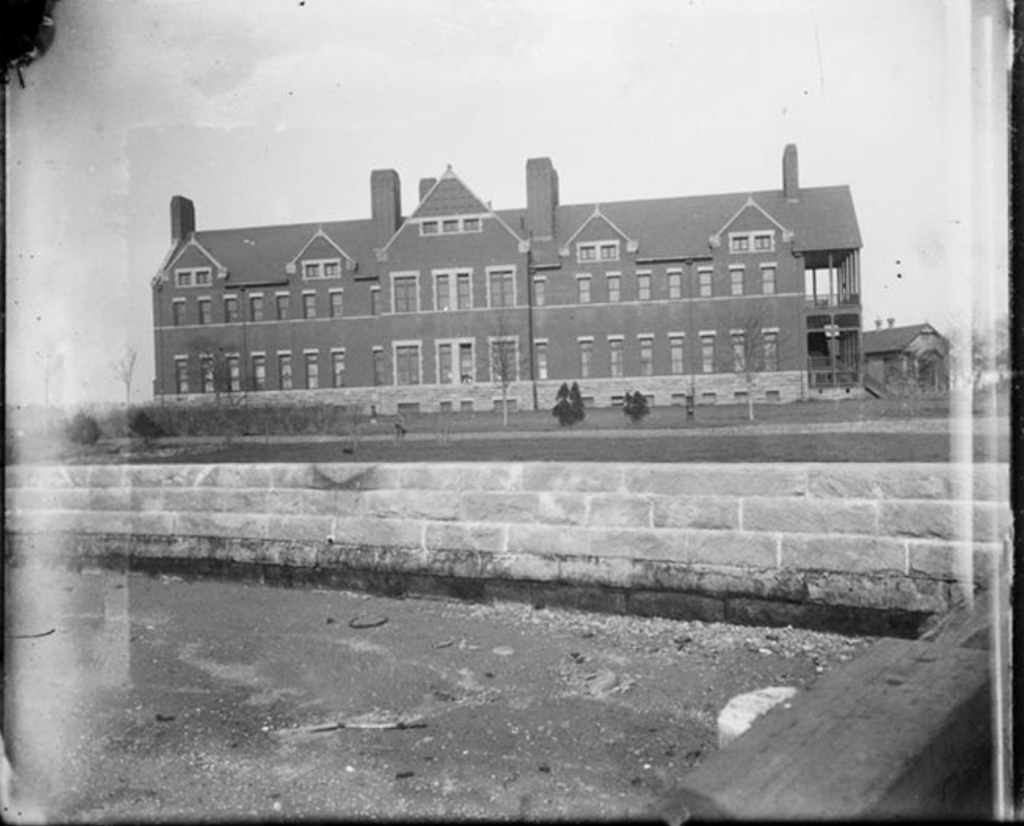
Greg’s video of North Brother Island while passing on the ferry to Soundview:
And see the island from a drone’s perspective! Also a egret’s perspective:
FURTHER READING
Damnation Island: Poor, Sick, Mad & Criminal in 19th Century New York by Stacy Horn North Brother Island: The Last Unknown Place in New York by Christopher Payne with a history by Randall Mason The Other Islands of New York City by Sharon Seitz and Stuart Miller Ship Ablaze: The Tragedy of the Steamboat General Slocum by Edward T. O’Donnell Typhoid Mary: Captive to the Public’s Health by Judith Walzer Leavitt
FURTHER LISTENING
After exploring the history of North Brother Island, visit these shows in the back catalog for more information about some of the people, places and events mentioned in this show:
The Bowery Boys: New York City History podcast is brought to you …. by you!
We are now producing a new Bowery Boys podcast every other week. We’re also looking to improve and expand the show in other ways — publishing, social media, live events and other forms of media. But we can only do this with your help!
We are now a creator on Patreon , a patronage platform where you can support your favorite content creators.
Please visit our page on Patreon and watch a short video of us recording the show and talking about our expansion plans. If you’d like to help out, there are several different pledge levels. Check them out and consider being a sponsor.
We greatly appreciate our listeners and readers and thank you for joining us on this journey so far.
12 replies on “The dark history of North Brother Island, New York’s forbidden place”
If anyone has futher interest in Blackwell’s Island, I’d recommend Damnation Island by Stacy Horn. And The Changeling by Victor LaValle features North Brother Island in a modern fairytale.
You guys did a great job with this one. Most of what you read about here is about Mary Mallon or the General Slocum. I really enjoyed hearing about Lighthouse Dan and those other earlier casualties. Visiting here was one of the most surreal experiences I have ever had; your podcast really satisfied that part of my brain that needed a revisit with new information.
My parents and I lived on North Brother Island while my father completed medical school on the GI Bill after WW 2. I commuted by ferry, then bus, to public school in the Bronx. I remember this place as Paradise. It is so sad to see it’s current state, but I am grateful for your commentary and film. I am now 78 years old. I would enjoy hearing from others with a similar unique experience of this eerily beautiful place. I am always happy to conjur up such wonderful memories.
that beautiful, do you have any photos. I am a local in hunts point where the island is in sight, growing up I always was curious about the island and was told it was haunted
I was born in 1948, and spent my first 3 years on North Brother Island. My older brother does remember the island. My mother always thought of it as a wonderful place to live.
Marcia, I am a writer and editor based near Boston, and I am researching North Brother Island for a novella I am writing. The novella takes place just after World War II—the time period you indicated your family lived on the island. I’d be interested to learn more about your life on the island—for example, what did children and families do for fun on the island? I believe there were tennis courts…but were there any organized social events? And what were the apartments like—full kitchens and baths, etc? I’ve done a fair amount of research but haven’t been able to find answers to these questions. Any details you can provide would be invaluable! I will plan to check this website periodically to see if you have responded.
Ms Mcgowan- my parents lived on North Brother 1948-49 or 50, a few years before I was born. They loved it, especially my father. He mentioned that he had a garden plot where he grew vegetables. He was never very clear on what sort of housing they had- whether it was a small cottage or an apartment in a larger building. I have an addressed envelop that I found that says “Low Hall, North Brother Island”. Would be very interested if you had any recollections or photos.
Hi Marcia! Could you please contact me at [email protected] ? I’m a documentary filmmaker working on a project regarding North Brother Island and I would love to speak with you about your experiences. Been trying to find you for the past few months and didn’t realize I could reply to you on here! Please get in touch if you can. Thanks!
North Brother Island is the setting for a recent fiction novel, The Vines, by Shelly Nolden. As it is historical fiction, part of it takes place during the Slocum disaster and continues up to today.
I discovered that while doing my research. And the author has a very nice website ! I’ll have to read her book this summer.
[…] La source : histoire de boweryboys […]
Fascinating. I grew up till 6 on 101st street between first Ave and the drive. We walked our dogs on wards island and for years I had the nightmare of the foot bridge opening from the middle and me falling in. The bridge actually went up by the entire middle section. North Brother island was north of wards island and was always ominous passing the hospital so closely on Triboro bridge. Nothing good ever happened there I’m sure. Draining the east river would be another amazing discovery. We always wondered how many cement shoed skeletons are down there! Excellent work to all. Thanks!
Leave a Reply Cancel reply
Your email address will not be published. Required fields are marked *
Save my name, email, and website in this browser for the next time I comment.
Support the Bowery Boys
Find out how you can support the production of the Bowery Boys Podcast.
Read the book
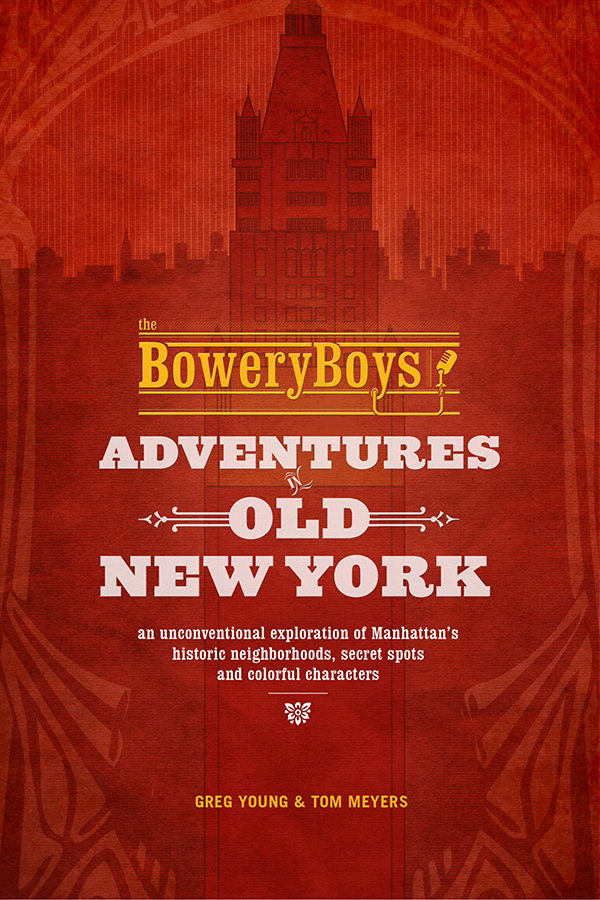
ARTS & CULTURE
Exploring new york city’s abandoned island, where nature has taken over.
Nestled in between the Bronx and Manhattan, North Brother Island once housed Typhoid Mary, but now is an astonishing look at a world without humans
/https://tf-cmsv2-smithsonianmag-media.s3.amazonaws.com/accounts/headshot/Rachel-Nuwer-240.jpg)
Rachel Nuwer
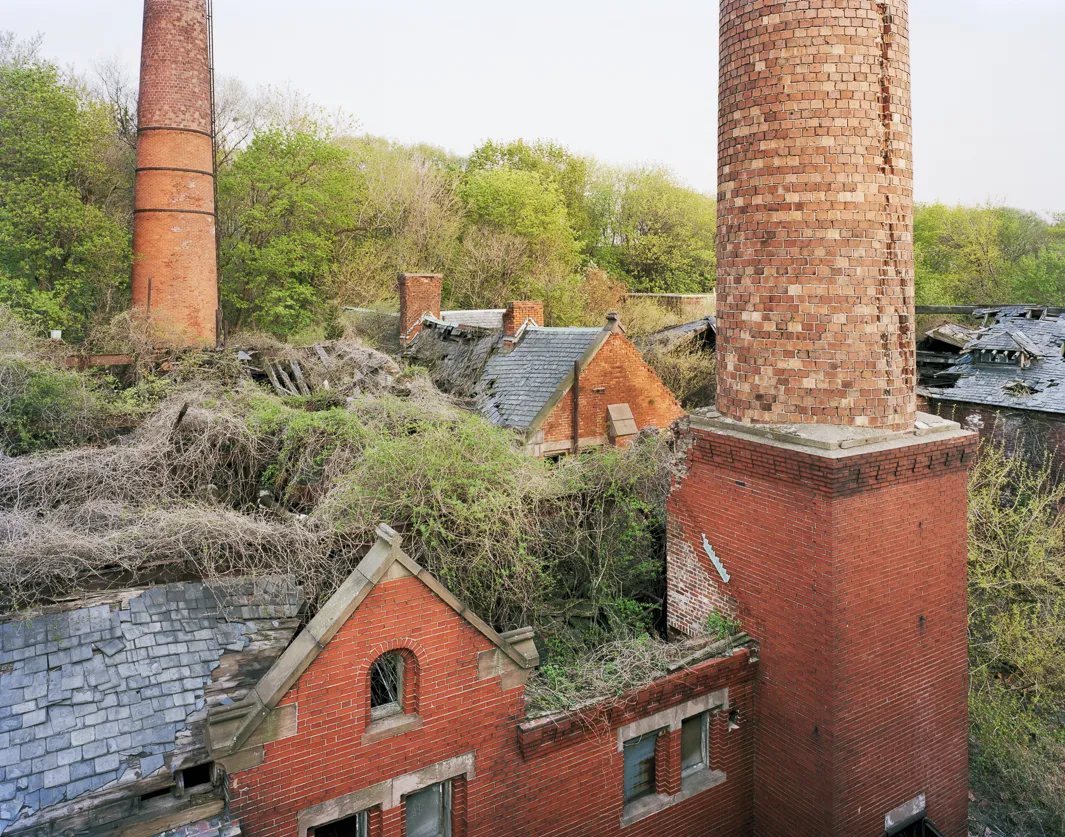
In the heart of New York City lies an abandoned island. Although it is clearly visible to commuters on the Bronx’s I-278 or passengers flying into La Guardia airport, few people are even aware of its existence. If anything, they have only heard that the infamous Typhoid Mary spent her final years confined to a mysterious island, situated somewhere within view of the city skyline. But even that sometimes seems the stuff of rumor.
Until 1885, the 20-acre spot of land—called North Brother Island—was uninhabited, just as it is today. That year saw the construction of the Riverside Hospital, a facility designed to quarantine smallpox patients. Workers and patients traveled there by ferry from 138th Street in the Bronx (for many of the latter, it was a one-way trip), and the facility eventually expanded to serve as a quarantine center for people suffering from a variety of communicable diseases. By the 1930s, however, other hospitals had sprouted up in New York, and public health advances lessened the need to quarantine large numbers of individuals. In the 1940s, North Brother Island was transformed into a housing center for war veterans and their families. But by 1951, most of them—fed up with the need to take a ferry to and from home—had chosen to live elsewhere. For the last decade of its brief period of human habitation, the island became a drug rehabilitation center for heroin addicts.
Mere decades ago, North Brother Island was a well-manicured urban development like any other. Judging from aerial photos taken in the 1950s, the wildest things there were a few shade trees. In those years, North Brother Island was covered by ordinary roads, lawns and buildings, including the towering Tuberculosis Pavilion built in the Art Moderne style.
Eventually, however, the city decided it was impractical to continue operations there. The official word was that it was just too expensive, and plenty of cheaper real estate was available on the mainland. When the last inhabitants (drug patients, doctors and staff) pulled out in 1963, civilization’s tidy grasp on that speck of land began coming undone.
Nature quickly got to work. Sprouting trees broke through sidewalks; thick sheets of vines tugged at building facades and spilled forth from windows like leaking entrails; and piles of detritus turned parking lots into forest floors. The East River insistently lapped at the island’s fringes, eventually wearing down barriers and swallowing a road that once circled its outer edge, leaving only a manhole cover and a bit of brick where veterans and nurses once strolled.
The island has remained free from human influence in part because the city forbids any visitors from going there, citing safety concerns. Now, however, New Yorkers and out-of-towners alike have the opportunity to explore North Brother Island. Not by boat and foot, that is, but through a meticulous photographic study of the place, published this month by photographer Christopher Payne .
Like many New Yorkers, for most of his life Payne was unaware of North Brother Island. He first heard of it in 2004, while he was working on a project about shuttered mental hospitals. North Brother Island seemed like a natural progression in his artistic exploration of abandonment and decay. In 2008, Payne finally secured permission from the Parks and Recreation Department to visit and photograph the island. From that first trip, he was hooked. “It was an incredible feeling,” he says. “You’re seeing the city, you’re hearing it, and yet you’re completely alone in this space.”
For the next five years, Payne paid the island some 30 visits, ferried out by a friend with a boat, and often joined by city workers. He photographed it in every season, every slant of light and every angle he could find. “I think it’s great that there’s a place out there that’s not developed by the city—one spot that’s not overtaken by humanity and is just sort of left to be as it is,” he says, adding that the city recently declared North Brother Island a protected nature area.
Few relics of the former residents exist, but Payne did manage to uncover some ghosts, including a 1930 English grammar book; graffiti from various hospital residents; a 1961 Bronx phone book; and an X-ray from the Tuberculosis Pavilion. Mostly, though, traces of the individuals who once lived in the dorms, doctors’ mansions and medical quarters have been absorbed into the landscape—including those of the island’s most famous resident, Mary Mallon. “There really isn’t much left of the Typhoid Mary phase,” Payne says.
In some cases, the carpet of vegetation has grown so thick that the buildings hiding underneath are completed obscured from view, especially in summer. “There was one time when I actually got stuck and just couldn’t go any further without a machete or something,” Payne says. “In September, it’s like a jungle.”
Eventually, Payne came to see the island as a Petri dish of what would happen to New York (or to any place) if humans were no longer around—a poignant thought in light of growing evidence that many of the world’s coastal cities are likely doomed to abandonment within the next century or so.
“Most people view ruins as if they were looking into the past, but these buildings show what New York could be years from now,” Payne says. “I see these photographs like windows into the future.”
“If we all left,” he says, “the entire city would look like North Brother Island in 50 years.”
North Brother Island: The Last Unknown Place in New York City is available new on Amazon for $28.93. For those based in New York City, author Christopher Payne will be hosting a lecture and book signing on Friday, May 16, at 6:30 pm at the General Society of Mechanical Tradesmen of New York. Rumor has it, Payne notes, that a former North Brother Island resident or two might turn out for the event.
Get the latest Travel & Culture stories in your inbox.
/https://tf-cmsv2-smithsonianmag-media.s3.amazonaws.com/accounts/headshot/Rachel-Nuwer-240.jpg)
Rachel Nuwer | | READ MORE
Rachel Nuwer is a freelance science writer based in Brooklyn.
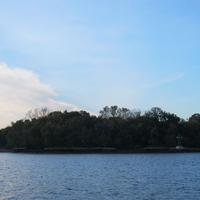
Nov 15, 2011
The New York City Parks Department would probably want me to start this way: North Brother Island is a ruin. It hasn’t been occupied, nor used for anything by anyone except nesting herons, since the early 70’s. Thus, it’s dangerous.
At best, you’ll probably walk away with a case of poison ivy. (We were spared somehow.) At worst, you could fall down an open utility shaft. The disused hospital where the city used to isolate tuberculosis patients is crumbling and may be rife with asbestos. Same with the other former medical buildings on the north end of the island. Even walking around is a chore. The whole place is choked with kudzu and porcelain berry. North Brother Island is what will happen to the whole of our civilization when humanity is dead.
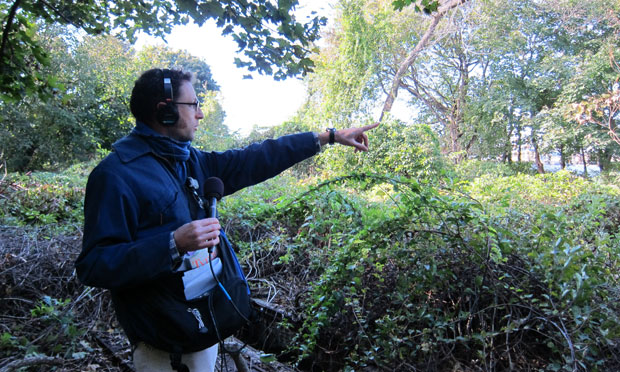
Sean on North Brother Island
But I’m actually going to start this way: North Brother Island is more fascinating by accident than most intentionally fascinating places are. It feels as though one day, everyone living and working there just dropped everything and left. It feels as much like that day was yesterday as it feels like it was 100 years ago. The hospital smells medicinal, maybe from all of the x-ray film piled up on the floor of the x-ray room. Random fire hydrants and lamp posts stick up through the thickets and weeds – but soon you realize there’s nothing random about it. There are roads under all that thick overgrowth. And curbs. A curb is so urban a thing this place can’t have ever claimed one, but it did. Roofs and basements should never meet each other, but they do here.
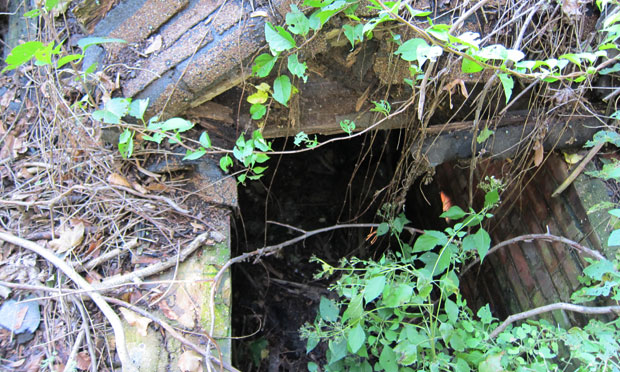
A collapsed building on North Brother Island. Mary lived in a cottage near this spot while under quarantine.
We visited this island for our story on Typhoid Mary . She was quarantined here and we wanted to find her cottage. (It doesn’t exist anymore.) North Brother Island is so close to the city I figured you could just canoe to it. And you can. If you want to be arrested. To visit the island you must:
1) Contact the parks department. They don’t even let themselves visit the island most of the time. March to October is off limits. That’s when the herons nest.
2) If the parks department gives you permission, you have to charter a boat, which can be really expensive. To make it more affordable, find other folks who need to visit and split the cost with them.
3) Thing is, a big group requires a big boat and a big boat can’t dock on the island. There’s no dock. We had to tie off on a rotting piling, motor over in a smaller boat, three by three, and beach ourselves onto the sand. In short, to get to North Brother Island, you have to mildly shipwreck yourself.
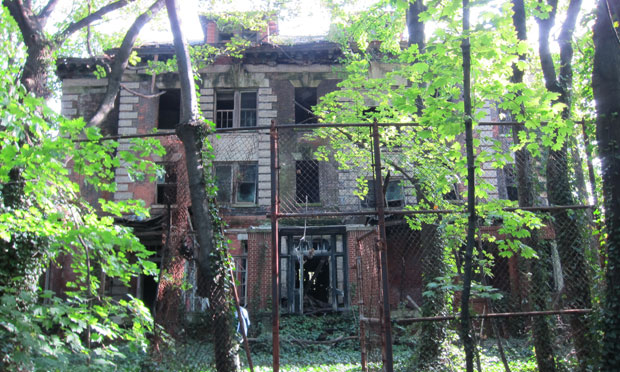
We think these quarters were used by nurses on the island.
What to do first:
If you’re pressed for time, explore the buildings first. From the spot where you beach, the hospital is straight ahead and to the left. (Ignore the broken, tilted awning above the entrance that says “Christian Center Sanctuary of Hope.” It’s a practical joke/art project.) But the hospital isn’t even the creepiest place. The creepiest place is (what we think was) the “Nurse’s Home.” Bullet holes perforate an outer door – all exit wounds. All the theater seats in the entertainment hall have collapsed. The curtain runner above the stage would still work were there a curtain. The wall switches still move up and down, with that loud, mid-20th century “tock.”
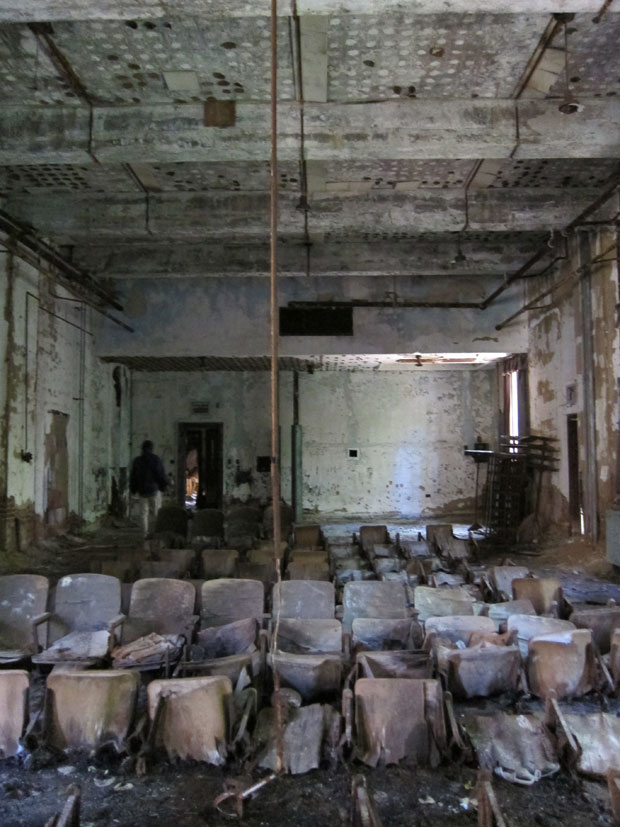
The abandoned theater.
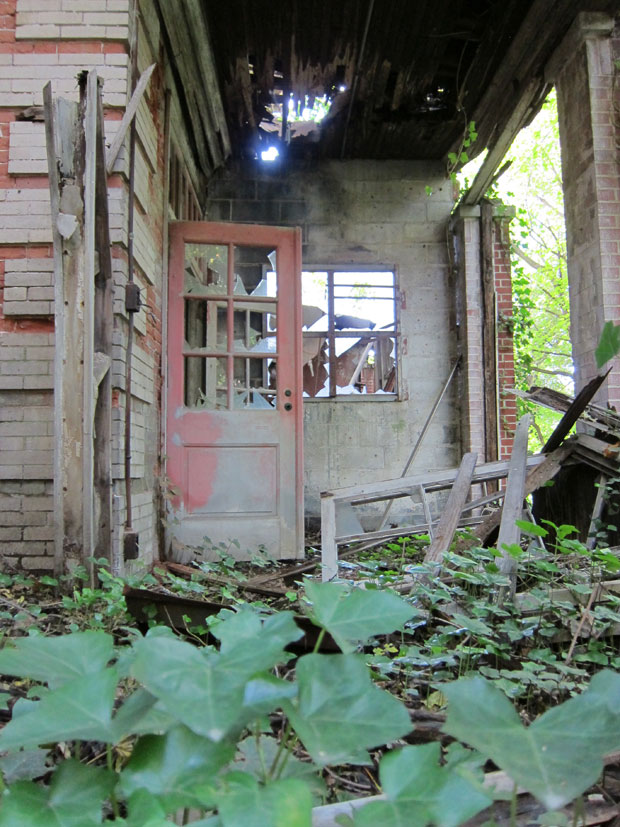
A porch in disrepair.
Still, the hospital is pretty incredible. We walked through the wards where TB patients were quarantined. Private rooms were available too, including one with bars on the windows and a door slot through which maybe food was delivered. Whoever was treated in there can’t have been very stable. In one of the offices, there are mimeographed handouts strewn across the floor as though a receptionist had an apoplectic fit and quit on the spot. “STUDIES ON ADDICTION FROM RIVERSIDE HOSPITAL,” they say. After this was (in essence) a leper island, it was a drug rehab facility.
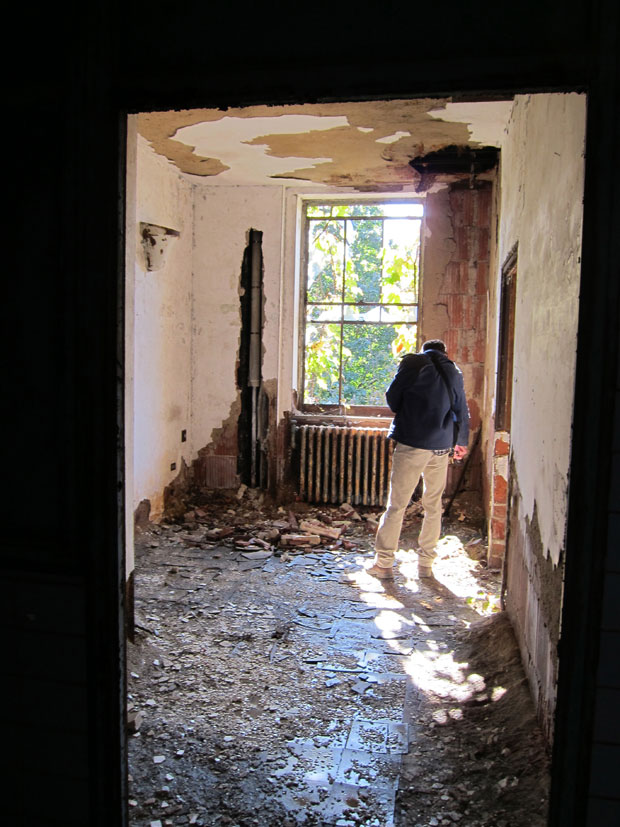
Sean inspects a hospital room.
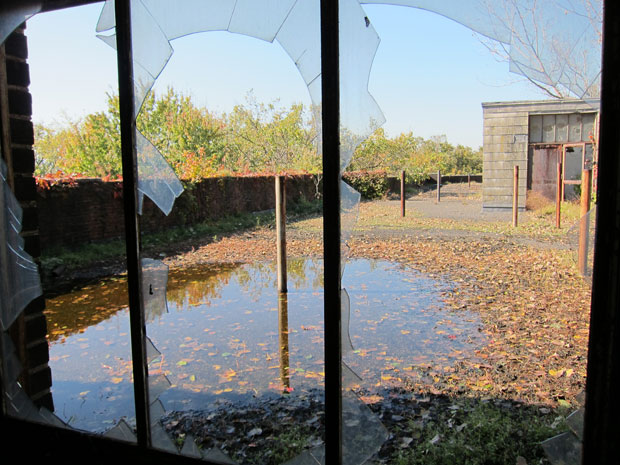
The view from the hospital room.
What to do next:
Walk south toward the lighthouse, past the smooshed chapel that looks like the house that landed on the witch in the Wizard of Oz. Keep an eye on the water until a sparkling view of Manhattan emerges. Seeing the city from this remove is a little like seeing Earth from the moon – especially if you imagine you’re Mary Mallon and aren’t allowed to go home, no matter how much you plead or cajole the doctors who are constantly testing your stool. It doesn’t feel like any place in the East River should ever have been so built up and inhabited, let alone so abandoned and allowed to melt down like this.
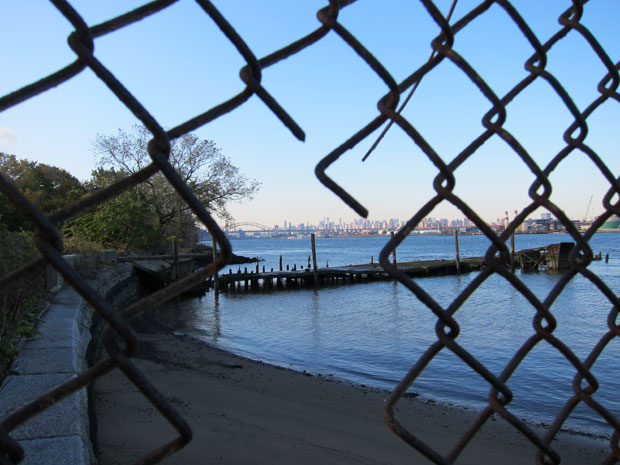
View of Manhattan through a broken fence.
Whatever you do, remember you’re one of a rare breed of people who have seen North Brother Island. So count yourself lucky. Oh, and take lots of pictures. Like our producer Lynn Levy did. This is Lynn:

Lynn Levy braving the ruins.
Thanks Lynn.
Unlock member-only exclusives and support the show
Exclusive podcast extras, entire podcast archive, listen ad-free, behind-the-scenes content, video extras, original music & playlists, unlock exclusives in the lab, sign up for the newsletter.
Test the outer edges of what you think you know
Produced by WNYC Studios
© 2024 WNYC Studios

Explore Essay
North Brother Island: The last unknown place in New York City
A photographer's visit to an island hiding in plain sight..
December 27, 2013
West side of North Brother Island from the Bronx | Click to enlarge. All photos by Christopher Payne, all rights reserved.
North Brother Island is among the most unexpected of places: an uninhabited island of ruins in New York City that hardly anyone knows; a secret existing in plain sight. It is both part of the city and a world apart from it. Its 20 acres sit low in the East River, just north of Hell Gate, with 25 or so buildings in various states of decay. As there is no public access, it’s most easily seen as you lift off the tarmac at LaGuardia or as you drive up the New England freeway through the Bronx.
North Brother Island came into prominence in the late 19th century, when public health issues of an exploding population regularly made headlines. Like other islands in the harbor, it was perfectly suited as a buffer against contagions, and from the 1870s through the 1930s it was used primarily as a quarantine hospital (the infamous Typhoid Mary was confined there). After WWII it provided a temporary home for veterans, and from the 1950s it was used as a juvenile drug treatment center until its closure in 1963. Over the years, new uses have been proposed for the island, but by and large it has been forgotten. Thanks to a threatened species of shorebird, the black-crowned night heron, North Brother has been designated as conservation land, to protect nesting grounds for the herons, which have unwittingly helped to preserve the island’s forgotten fragments of New York’s history.
Maintenance Building workshop
Since 2006, with permission from the New York City Department of Parks & Recreation, I have been one of a few photographers allowed on the island, and my photographs comprise a comprehensive record of the buildings and its evolving landscape over many seasons. Devoid of human habitation for over half a century, the buildings, streets, and facilities are in ruins, reclaimed by lush vegetation. My photographs of the island, all of which were taken with a large format view camera, convey the beauty and significance of this wild landscape that brims with intrigue and paradox.
A NYSCA grant, sponsored by The Architectural League, supported the production of my latest book, North Brother Island: The Last Unknown Place in New York City . The fascinating history of this unique place touches upon public health policy, urban planning, historic preservation, and environmental conservation. By bringing the island to public consciousness, I hope to give renewed civic presence to a long-inaccessible part of the city.
In 2012, the League’s Urban Omnibus interviewed Christopher Payne about his work, the intersections between his architectural background and artistic practice, and the role photography can play in reminding us of our disappearing histories. In that interview, Payne discussed his photography of North Brother Island. What follows is an excerpt from that conversation:
Payne : There’s a book called The World Without Us by Alan Weisman that imagines what would happen to the planet if humans disappeared. He dedicates a chapter to New York City that might as well be captions for these photos. The series isn’t just about the abandoned buildings, it is about the universal story of man’s attempts to live in and alter the natural world, and how nature always reasserts herself in the end.
Architects are taught to think about how buildings will age, but we never think how they will fall apart. People assume it takes centuries. But on North Brother Island, that jump from human habitation to unrecognizable ruin is just a few decades.
When you see historic photographs of North Brother, you see this huge, open, well-maintained campus. This was not just a cluster of buildings in a wooded landscape. But we don’t think about the parts we can’t see, buried just beneath our feet—the streets, the fire hydrants, the lampposts. And this is an island that used to be very much connected to the city. There were ferries running back and forth, for people who worked at the hospital, or for the families that lived there after WWII. We’re looking at things that had so much meaning just fifty years ago, and now, even in a city as big as this, no one remembers them except maybe one or two people who actually went to school there, who were on the island when it was an active community . . . All it takes is one generation for that kind of public knowledge to be lost. We assume history will be remembered, but that’s not always the case. I think photographers are acutely aware of that.
All photographs by Christopher Payne. All rights reserved.
Christopher Payne specializes in the documentation of America’s vanishing architecture and industrial landscape. Trained as an architect, he is fascinated by how things are purposefully designed and constructed, and how they work. His first book, New York’s Forgotten Substations: The Power Behind the Subway, offered dramatic, rare views of the behemoth machines that are hidden behind modest facades in New York City. His second book, Asylum: Inside the Closed World of State Mental Hospitals, which includes an essay by the renowned neurologist Oliver Sacks, was the result of a seven-year survey of America’s vast and largely shuttered state mental institutions.
Payne’s forthcoming book, North Brother Island: The Last Unknown Place in New York City, explores an uninhabited island of ruins in the East River. Payne’s photographs invoke the former grandeur of the site over different seasons, capturing hints of buried streets and infrastructure now reclaimed by nature, while also offering a unique glimpse into a city’s future without people.
Payne’s recent work, including a series in progress on the American textile industry, has veered away from the documentation of the obsolete towards a celebration of craftsmanship and small-scale manufacturing that are persevering in the face of global competition and evolutions in industrial processes. Nearing completion is One Steinway Place, a tour through the famous Steinway & Sons piano factory in Astoria, Queens. Here a team of skilled workers creates exquisite instruments considered to be some of the finest in the world. Payne captures moments of the choreographies of production and assembly, and inspects the parts and pieces of the instruments that will never be visible outside of the factory, telling a story of intricacy, precision, and care he fears is becoming all too rare in the American workplace. For more information about his work, visit chrispaynephoto.com .
Christopher Payne
Horizontal light: lewerentz, aalto and the nordic landscape.
Thomas W. Ryan explores the seminal works of Alvar Aalto and Sigurd Lewerentz in Sweden and Finland.
Lina Bo Bardi’s return to Salvador
Angela Starita discusses the architect's (mostly unrealized) plan to restore the historic city center of Salvador, Brazil.
Material tour de force: The work of Eladio Dieste
Julian Palacio visits Uruguay to examine the material and structural innovation of the work of engineer Eladio Dieste.
This site uses cookies to improve user experience. By continuing to browse, you accept the use of cookies and other technologies.
New York’s Haunting and Forgotten North Brother Island
Set sail for North Brother—a forgotten island in the midst of the Big Apple.

- Photo Credit: Christopher Payne
Off the coast of the Bronx lies the last unknown place in New York City.
North Brother is a 20-acre island of ruins in the middle of the East River. Cut off from the city, yet deeply connected to its history, the eerie site is rich with tales of isolation and tragedy.
In 1885, North Brother became the quarantine quarters of Riverside Hospital. There, carriers of deadly contagions were sent for treatment in separation from the growing populace of New York. Typhoid Mary, the notorious Irish cook who infected over 50 people with her cooking, called North Brother home–whether she liked it or not. Mary was forcibly secluded on the island twice, first from 1907 to 1910, then again in 1915, where she remained until her death more than two decades later.
Related: The Ghosts of New York: 5 Boroughs, 5 Hauntings
North Brother was also the site of New York’s worst maritime disaster . In 1904, the General Slocum steamship caught fire in the East River, just south of the island’s shore. Over 1,000 people–mostly women and children–lost their lives in the catastrophe, with many of the bodies washing up on North Brother.

- Photo Credit: The Gilder Lehrman Institute of American History
Want more abandoned places? Sign up for The Lineup 's newsletter, and get our creepiest locales delivered straight to your inbox.
The island later became a drug treatment center for juvenile offenders. But by the 1960s, the facility had closed and the island was abandoned for good.
At which point, nature took over. The once-manicured lawns and massive brick buildings were slowly swallowed up by underbrush and ivy. As the Big Apple blossomed into a city of 8.4 million people, North Brother quietly returned to a wild state.
Related: Hart Island: The Big Apple’s Mass Burial Ground of Unknown Dead
The island is now a sanctuary for herons and off-limits to the public. Recently, photographer Christopher Payne was granted permission to document North Brother in all its decaying wonder. Payne, who specializes in capturing vanishing landscapes, was instantly drawn to the remote island: “If you can get there,” he says, “the rarest of solitudes awaits you.”
Get a glimpse of North Brother’s strange beauty in Payne’s photos below, then check out his stunning book, North Brother Island: The Last Unknown Place in New York City .

View of Manhattan From the Shore of North Brother

Remnants of the Boiler Plant From the Roof of the Morgue

Natural Sky Light From Inside the Boiler Plant

The Facade of St. John-By-the-Sea Church

A Side View of St. John-By-the-Sea Church

Remains of the Service Building’s Auditorium

North Brother’s Morgue in the Fall

North Brother’s Morgue in the Summer

The Tuberculosis Pavilion in the winter. The building is the island’s largest structure and served as housing for juvenile drug offenders.

The Tuberculosis Pavilion in the Spring

The Tuberculosis Pavilion in the Summer

A grammar book from 1930. North Brother had its own school, P.S. 619, for the children with communicable diseases who were quarantined on the island. It later served the island’s juvenile drug offender population.
Photos courtesy of Christopher Payne; Newspaper image via The Gilder Lehrman Institute of American History
KEEP SCROLLING FOR MORE CREEPY STORIES
Get our eeriest tales and best book deals delivered straight to your inbox..
© 2024 OPEN ROAD MEDIA
- We are a participant in the Amazon Services LLC Associates Program, an affiliate advertising program designed to provide a means for us to earn fees by linking to Amazon.com and affiliated sites.
Site search
- Los Angeles
- San Francisco
- Archive.curbed.com
- Homes for sale
- Homes for rent
- Neighborhoods
- Architecture
- Development
- Affordable Housing
- Transportation
Filed under:
A 30-Photo Tour of the Abandoned North Brother Island
/cdn.vox-cdn.com/uploads/chorus_image/image/61331655/North-Brother-Island-15-Morgue-plant-from-dock.0.0.1450311800.0.jpg)
North Brother Island , the 13-acre piece of land that once housed a quarantine hospital, has long been a source of fascination for urban explorers and history nerds. Abandoned since the early 1960s, the island and its crumbling medical structures, famous for housing Typhoid Mary , have been taken over by nature. As a Radiolab producer once said , "North Brother Island is what will happen to the whole of our civilization when humanity is dead." Curbed tipster and urban photographer 2e recently journeyed to the island, only accessible by boat, and here now, we have 30 photos from his 7-hour adventure. "It's funny because often times you read about a place like this only to be let down after actually going," says 2e. "North Brother Island is not one of those places. In fact, to date, it has hands down been the most fascinating location I've been to."
· How to Get to North Brother Island [Radiolab] · North Brother Island [Wikipedia]
More From Curbed NY
- Curbed Is Moving to New York Magazine
- We Unearthed the 68 Best Rent Deals in NYC Right Now
- Landlords Lose Fight Against Rent Protections, Hotel Chelsea’s Latest Tenant Battle, and Other News
- City Hall Park Is Still Under Lockdown, the MTA Has a Man Cave, and Other News
- The Cheapest, Nicest Apartments for Sale in the West Village
- Bill de Blasio’s Plan to Close Rikers Is Crumbling
Share this story
Things you buy through our links may earn Vox Media a commission.
NYC’s North Brother Island, Abandoned for 50 Years, Might Finally Be Opened to (Legal) Visitors
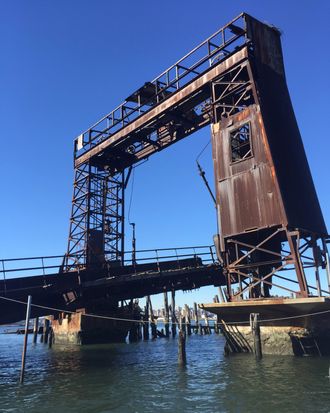
North Brother Island is a 20-acre speck off the Bronx in the East River. It opened, in the 1880s, as a quarantine site, where the city shipped and shut away the sick. The hospital converted to a drug rehab center for heroin-addicted teens in the 1950s. Corruption and high costs ended the program a little more than a decade later, around 1963. The patients, the staff — everyone — left. The island has been abandoned since.
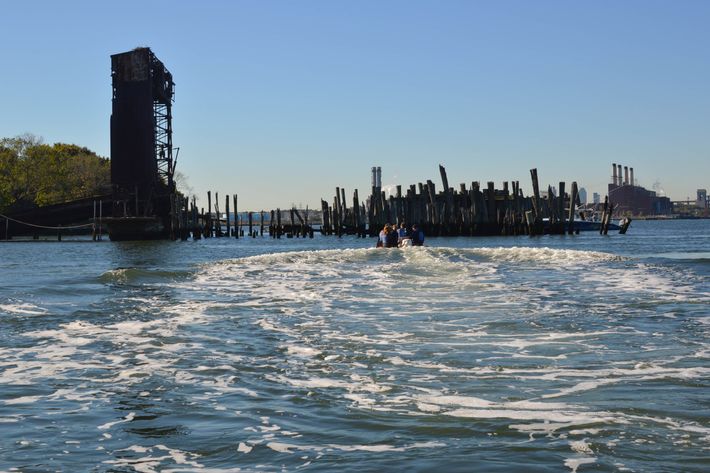
Isolated and uninhabited, North Brother’s campus crumbled — New York’s own lost civilization. The elements cracked opened dormitories and hospital buildings. The roads and paths wore away and were swallowed up by weeds. That transformation has turned an unwanted island, now technically off-limits, into the opposite. Only a few privileged people who have gotten permission from the New York City Parks Department — the island has been under its control since 2001 and is now designated as a bird sanctuary — or lawbreaking urban explorers have visited the ruins.
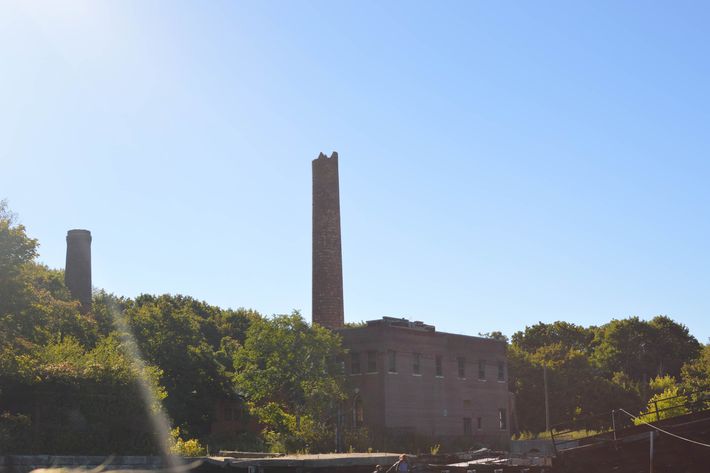
But that may change soon: City Council members are proposing a way for New Yorkers to take legal trips to North Brother Island. “I think the time has come for a plan to open up limited access,” said councilmember Mark Levine, after a rare visit to Norther Brother Island recently. He and fellow councilmembers, including Speaker Melissa Mark-Viverto, Parks employees, and community members loaded up in motor boats — or, in some cases, a raft with a motor attached — for a tour of the abandoned site.
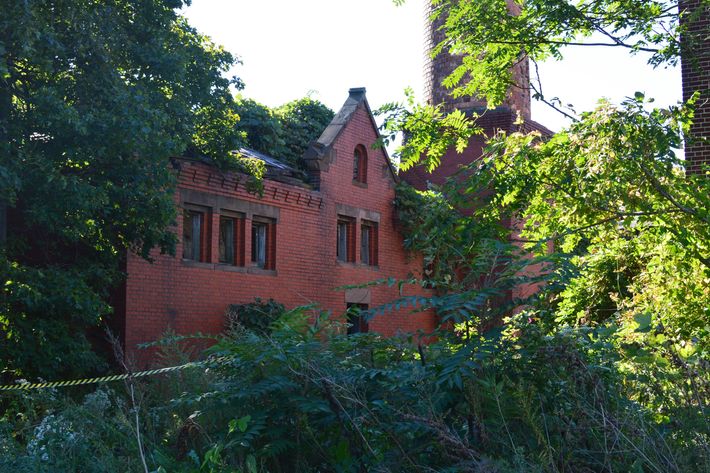
Levine, who chairs the Parks Committee, first floated the idea of opening North Brother after a visit in 2014 . But the island’s biggest draw — its arresting deterioration — is also its big problem: More than half a century of neglect has left North Brother with many hazards. The island’s structures, most of which date back to the late 19th or early-20th centuries, are actively “shedding bricks,” warned John Krawchuk, the executive director of the Historic House Trust, during the tour. He pointed to the chipped smokestack of the old boiler house. Staring up and on the lookout for falling debris means ignoring the dangers below. Off the path, gaping manholes and broken branches are hidden like booby traps by untamed weeds. The poison ivy is inevitable, even on the sanctioned routes.
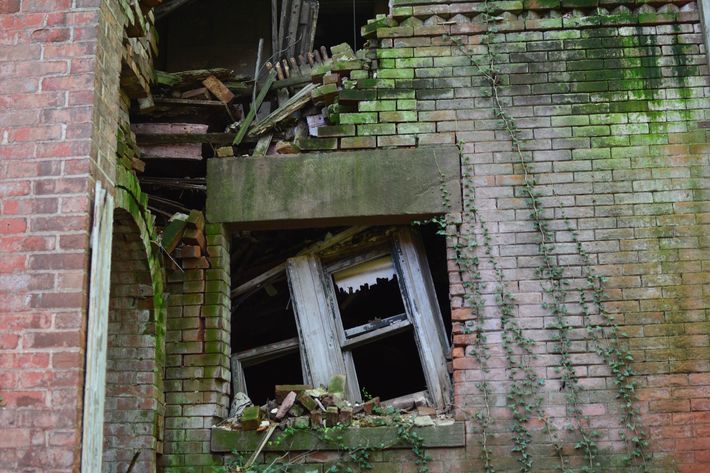
There’s no easy way to just turn the island into a park. But the City Council has started to tackle that challenge, commissioning a study by the University of Pennsylvania’s School of Design to help find ways to make the island more accessible. “We’re not talking about creating the next Governor’s Island with people running around at will,” Levine said. “This is a way for groups of students and people who care about the history of the city to experience in person something that you just can’t read about. It’s not the same to look at pictures, you have to walk on the island to feel the enchantment.”
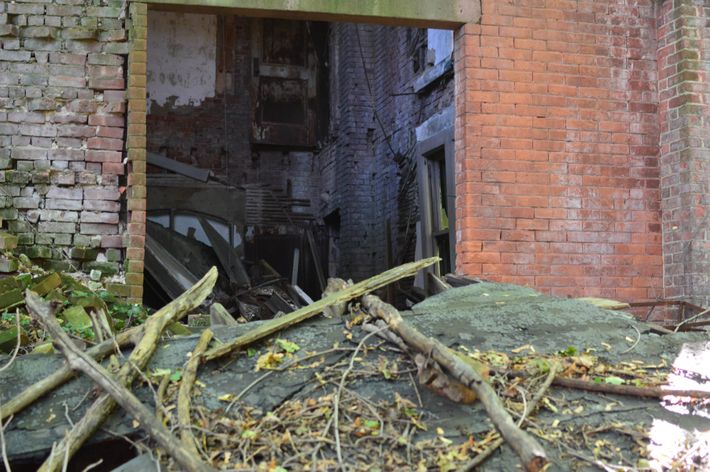
The enchantment also comes at a price. Any plan to open up North Brother Island is most definitely going to be costly. The island needs a usable dock to receive visitors: To get to the island last week, each member of the group had to clamber up splintering wooden pylons and hoist themselves onto what was once a service dock. Even worse: Rushing to depart before the tide went out, crouching on the dock’s beams and sliding down, feet first, fumbling for the floor of the boat.
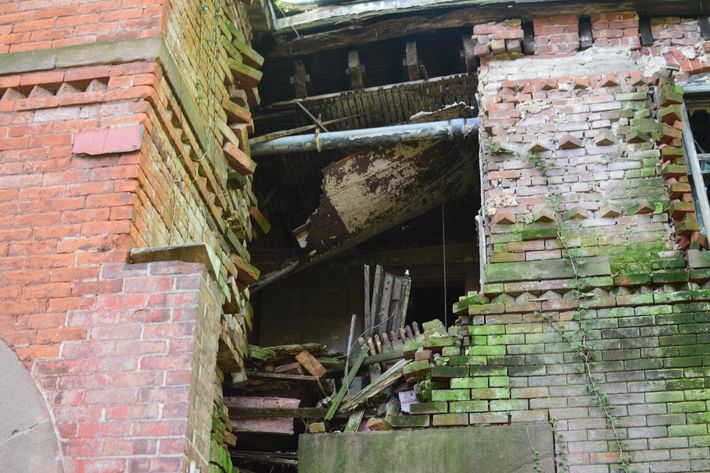
“To restore it, maintain it, and manage it — it would be an very expensive undertaking,” NYC Parks Commissioner Mitchell Silver said after exploring the island for the first time. “But,” he added, “it is tempting.”
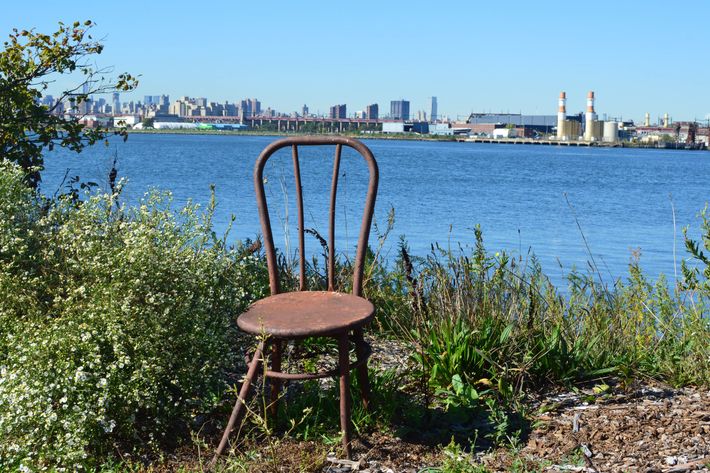
So tempting. The island “essentially served as its own city,” Krawchuk explains. At different points in its existence, it had a functioning morgue, a public school, even tennis courts. As a quarantine, the buildings housed patients, mostly poor and immigrant, with yellow fever and measles and tuberculosis. Some doctors, nurses, and their families boarded on the island; others commuted by boat. Typhoid Mary is the institution’s most famous patient; she was quarantined here on and off for 28 years. She died on North Brother in 1938.
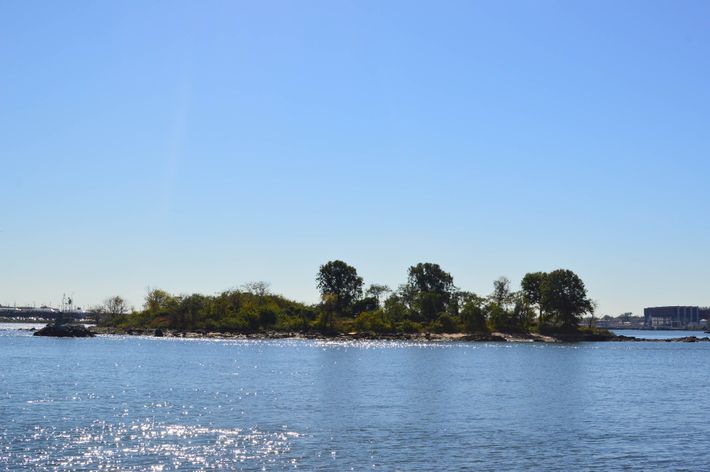
The oldest structures date back to 1885 and the most recent is the Tuberculosis Pavilion, a hospital that opened in 1943, just in time to be obsolete. After World War II, North Brother’s buildings were converted to veterans’ housing. Then came its last chapter as an experimental, but ultimately failed, addiction center for teenagers. (It was said to inspire the play Does a Tiger Wear a Necktie? , for which Al Pacino made his Broadway debut. )
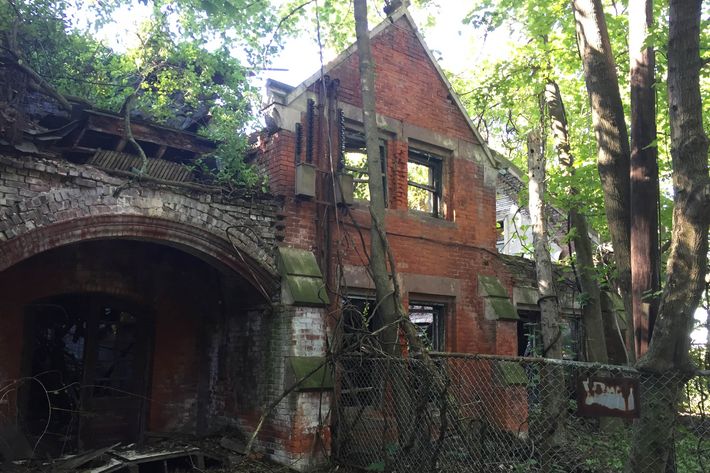
The city has tried to figure out what to do with North Brother Island since it emptied in the 1960s. Mayor John Lindsay proposed selling it, Krawchuk said. Mayor Ed Koch wanted to house the homeless there. In the 1990s, the city considered expanding the facilities at Rikers, whose fortress looms off North Brother’s shore.
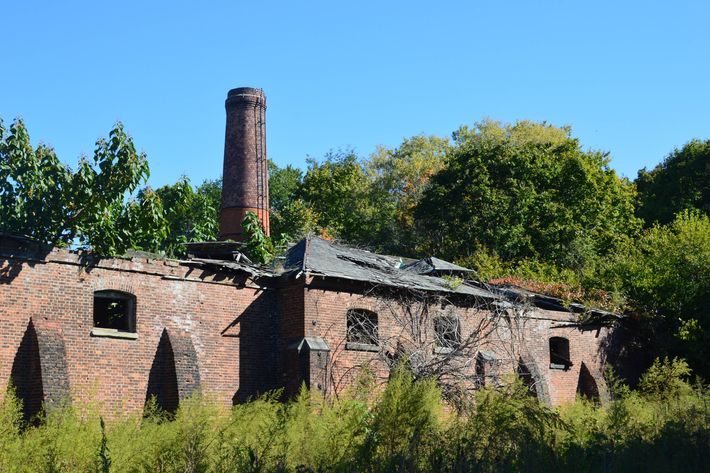
North Brother has found new purpose as a migration stopover for herons and other wading shorebirds. It’s classified, with its abandoned sibling South Brother Island, as a “Harbor Herons Region,” a protected area for shorebirds to nest. The Parks Department also invests in reforestation projects, ridding the land mass of invasive species and trying to kill the creeping kudzu and poison ivy that are swallowing the decaying structures, and pretty much the entire island.
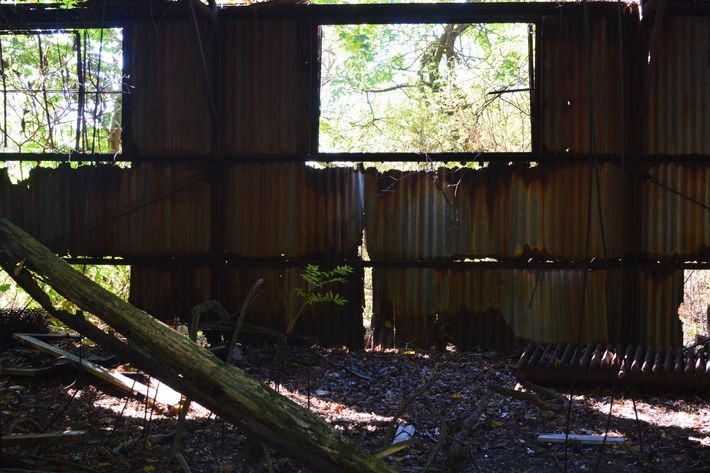
Those herons have priority over humans right now, and their protection — and other environmental concerns — gets first billing in any future proposal for North Brother. No visitors are allowed during nesting season. It was over at the time of this recent visit, and even knowing this, the island did seem eerily devoid of animal life. It was almost impossibly quiet, except for the interlopers tromping through the brush.
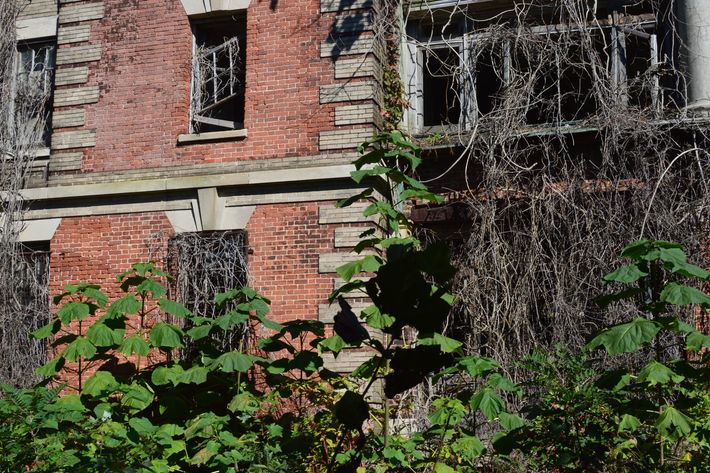
But the island is alive, transforming itself in real time. Our group passed by North Brother’s church, built on the island around 1906. The chapel is made of wood, making it more vulnerable to rot and decay. It was all but gone when the tour passed by — just barbs of wood poking out from the grass. On his previous visit, Levine said, the chapel’s archway was still standing.
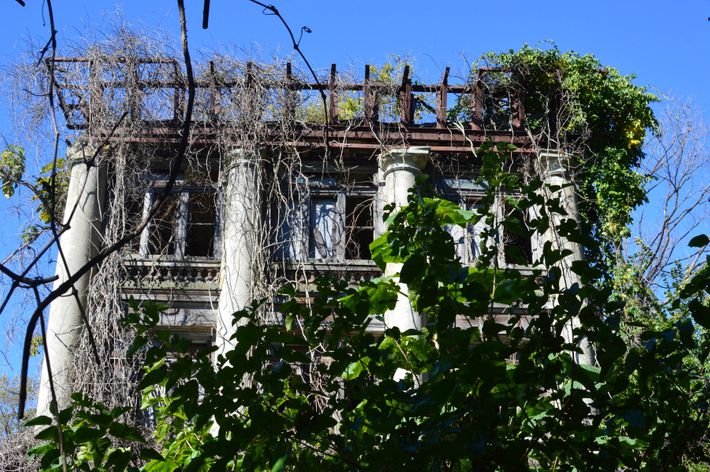
Which is why Levine thinks the city has an obligation to find a way for people to visit, and soon. “You shouldn’t have to be a City Council member or a reporter to visit the island,” he said.
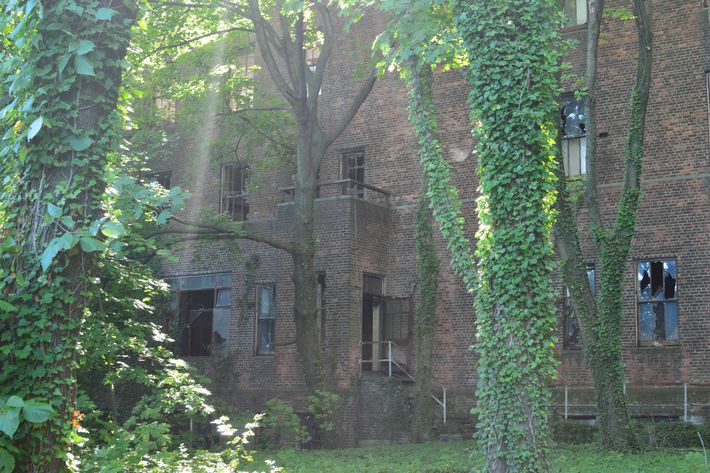
Councilman Levine’s office said the UPenn study is being finalized and should arrive in the next two weeks. It will first be presented to the City Council’s Bronx delegation in November, and the Council’s Parks Committee will schedule a hearing in December about North Brother and other restricted spaces like Hart’s Island. The study will sketch out what has to be done to allow trips — the necessities, like building a landing dock and shoring up the structures. It may also include long-term recommendations, such as the possibility of restoring buildings. Again, there are no real plans yet, but past surveys have identified two potential candidates for revival: the male dormitory, which is one of the island’s original structures, and the coal house, which, built in 1904, is in relatively good condition, says Krawchuk.
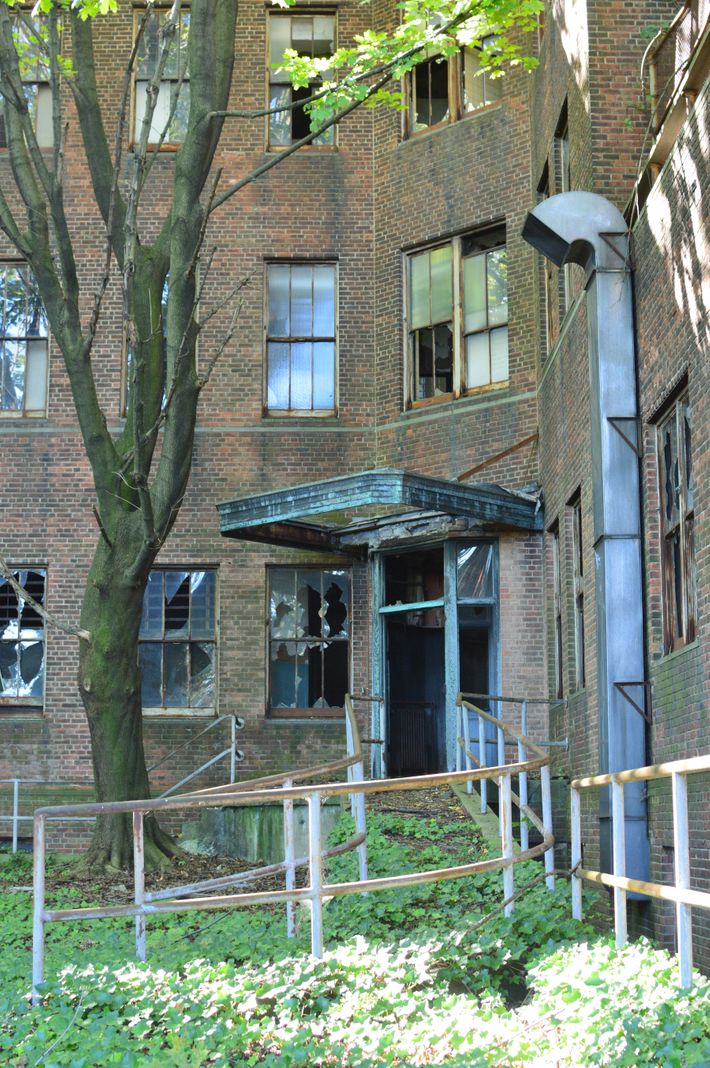
The Parks Department, which allowed for the study, will consult with the City Council on any of the researchers’ recommendations. It’s unclear if the study will have a budget proposal to take on even the minimal but necessary upgrades. “It if doesn’t, we’ll work with our staff to quickly sketch out a capital plan,” Levine said.
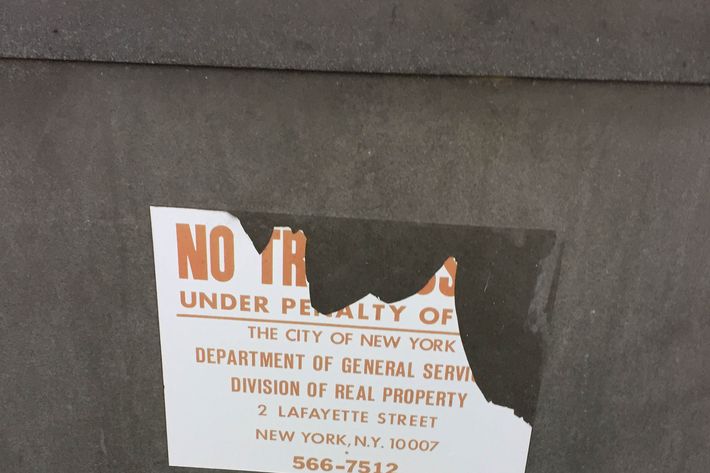
Which is all to say, New Yorkers might be more likely to walk that floating park in the Hudson before they can do so on North Brother. These are just the first and very small steps to opening up an island that no New Yorkers ever wanted to go to – until they no longer could.
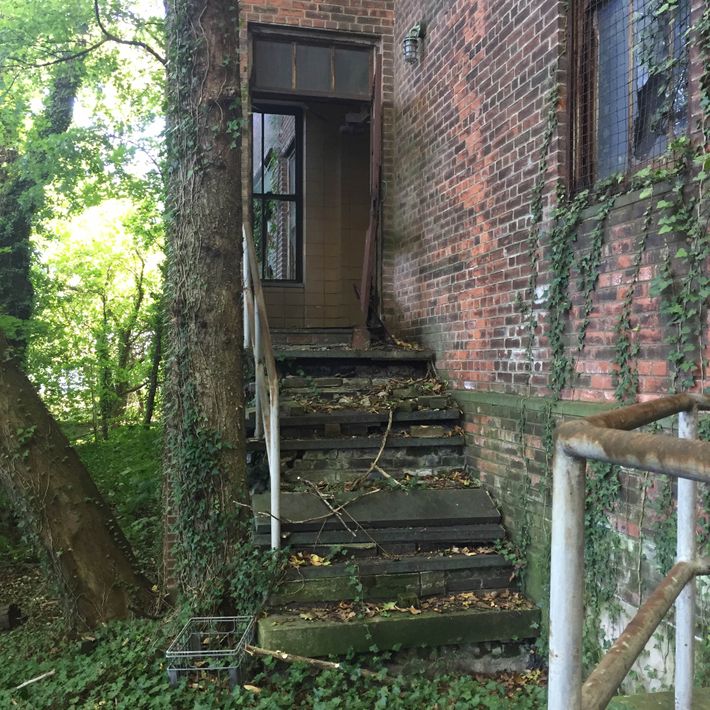
- north brother island
- urban explorers
- urban ruins
Most Viewed Stories
- Peloton Just Lost 3 Star Instructors, But Bigger Problems Loom
- Democrats Ask Who Can Make Biden Step Aside
- Biden Stumbles in First Presidential Debate: How It Happened
- Will Biden Be Replaced After Debate? Live Updates
- My Father and the Withering of Liberal Zionism
- Who’s the Trump VP Pick? Latest Odds for Every Shortlist Candidate.
Editor’s Picks

Most Popular
- Peloton Just Lost 3 Star Instructors, But Bigger Problems Loom By Kevin T. Dugan
- Democrats Ask Who Can Make Biden Step Aside By Gabriel Debenedetti
- Biden Stumbles in First Presidential Debate: How It Happened By Intelligencer Staff
- Will Biden Be Replaced After Debate? Live Updates By Intelligencer Staff
- My Father and the Withering of Liberal Zionism By Ayelet Waldman
- Who’s the Trump VP Pick? Latest Odds for Every Shortlist Candidate. By Margaret Hartmann

What is your email?
This email will be used to sign into all New York sites. By submitting your email, you agree to our Terms and Privacy Policy and to receive email correspondence from us.
Sign In To Continue Reading
Create your free account.
Password must be at least 8 characters and contain:
- Lower case letters (a-z)
- Upper case letters (A-Z)
- Numbers (0-9)
- Special Characters (!@#$%^&*)
As part of your account, you’ll receive occasional updates and offers from New York , which you can opt out of anytime.
- Newsletters
- Account Activating this button will toggle the display of additional content Account Sign out
The Mysterious New York City Island You’ve Never Heard Of
Christopher Payne
North Brother Island is a secret hiding in plain sight. Located in New York’s East River, it was once an important part of the city’s infrastructure. In the last 50 years, however, it’s descended into ruin: Buildings have crumbled, vegetation has grown wild, and its primary visitors are now migratory birds. But as photographer Christopher Payne found out in the course of creating his book, North Brother Island: The Last Unknown Place in New York City , the island still has stories to tell.
Payne, a former architect who specializes in photographing what he calls “America’s vanishing architecture and landscape,” became interested in the island while on assignment to document uses of the East River. In 2008, he wrote a proposal to conduct a photography survey of the island, which is usually off-limits to the public. The New York City Department of Parks and Recreation agreed to grant him access on the condition that he only visit between September and March, months when migratory birds —including gulls, herons, cormorants, and egrets—are not nesting there.
Over the next five years, Payne made the 10-minute boat trip from the Bronx’s Barretto Point Park to the island dozens of times, accompanied by parks department staff. At first, Payne had to acclimate himself to the island’s geography, navigating the thick vegetation and discovering the way in which light changed throughout the day. Though the Bronx and Manhattan were within eyesight, Payne found wandering the island alone was a uniquely isolating experience. “Even though visually you have that connection to the city and you can still hear things—I could hear the Mister Softee truck sometimes—there’s still this sense that you’re disconnected,” he said. “Living in New York, everyone craves their own space and isolation once in a while. When you’re on the island you definitely have that. It’s a rare feeling.”
Between the 1880s and the 1930s, North Brother Island was the site of Riverside Hospital, where those suffering from infectious disease were treated in isolation. After World War II, it served as a housing community for returning veterans and their families. In the 1950s and early 1960s, it became a juvenile drug treatment center. While Payne knew the island’s story, he often had trouble finding physical evidence of its past. “It was very hard for me to find the artifacts I expected to find. They really just didn’t exist. Most of the time you’re looking at the shell of a building, and it’s so far gone you can’t even tell what it was used for. It forced me to look closer, to see graffiti on the walls or to look on the floor,” he said. “A lot of it was detective work. It was like trying to invent a life for something, trying to find a shot or a view that suggested what it used to be.”
With time, Payne discovered some of the clues he sought, but he ultimately found he was more attracted to the island’s natural environment than its manmade structures. As the seasons changed, the landscape shifted dramatically, affecting the appearance of the buildings it now dominated. “One thing that struck me was seeing how much nature had reclaimed the island. If you go there and don’t have any idea what the place used to be, you’d assume that’s how it always was, but if you look at the historical photos, you’ll see this campus with manicured streets and lawns. Now it’s a forest,” he said. “I read this book called The World Without Us by Alan Weisman. He described what would happen if people left the planet. He has a chapter on New York City, and what he wrote could have been captions for my photographs.”
Can People Visit the Abandoned North Brother Island?
By: Author The Drivin' & Vibin' Team
Posted on October 27, 2021
North Brother Island, part of New York City, is 22 acres of unsettling history.
It now lies abandoned, and maybe that’s for the best.
But can such a sad place ever turn into something good? And can you check it out for yourself?
We’ve got you covered!

Where Is North Brother Island?
North Brother Island is a tiny island in the East River of New York City. It and its companion island, South Brother, lay between the Bronx and Rikers Island.
What is North Brother Island?
North Brother Island is an abandoned area known for its history of sickness. Initially, it was a home for people suffering from infectious diseases such as typhoid, scarlet fever, yellow fever, and typhus. Later, six people with leprosy lived there.
The most infamous resident was “Typhoid Mary” Mallon. An Irish immigrant and cook, Mallon stayed healthy herself while transmitting typhoid to those around her. She was responsible for an estimated 43 infections and three deaths.
She was incarcerated on North Brother Island and eventually released after promising not to return to work as a cook. However, she changed her name and kept cooking.
In the 1950s, North Brother Island held a facility for teen drug addicts. Their methods were called into question, especially amid reports of staff corruption and ineffective treatments.
Ultimately, in 1963, North Brother Island was abandoned.
Pro Tip: After exploring North Brother Island camp out on one of these 7 Best New York Beach Campgrounds .

Can You Visit North Brother Island?
North Brother Island is closed to the public for a few reasons. First, the buildings are incredibly unsound, and it’d be dangerous to allow people there.
One of the very few happy things in the story of North Brother Island is that it’s now a protected bird sanctuary. Herons and eagles, among other birds, enjoy peaceful lives there.
On very rare occasions, visitors may acquire permits to visit if it proves necessary for research.
Pro Tip: Like North Brother Island, Central Park can get spooky at night. Before you pitch a tent in this iconic New York spot, read Is Camping in Central Park Okay?
What’s On South Brother Island?
South Brother Island is also a nature preserve. Visitors aren’t permitted there either.

Things To Do Near North Brother Island
Visit edgar allan poe’s cottage.
Since you can’t visit the haunting dilapidation of North Brother Island, perhaps you can console yourself with a trek to a house once occupied by American Gothic master Edgar Allan Poe. The writer moved to the cottage in 1846, hoping the then-rural country air would heal his wife’s tuberculosis.
The building has been open to the public since 1913 and fell into disrepair in the 1970s.
Since then, the Bronx Historical Society has maintained the Poe Cottage, which is now on the National Register of Historic Places.
The house is unfurnished and designed to look as it would have when Poe lived there. There is an adjoining building with exhibits on Poe’s life and work.
Know Before You Go: Poe’s Cottage is currently closed due to the COVID-19 pandemic. Check the website for updates before you plan your trip .

The Bronx Zoo
The Bronx Zoo has over 8,000 animals and a broad range of programming. Prepare to devote a whole day to it. Keep in mind that the entry fee is nearly $40 for anyone over 13, and parking is $17. So make sure you have the time to get your money’s worth, which won’t be hard to do.
Spread out over 265 acres, the zoo entertains and informs on exhibits from big baboons to butterfly gardens.
Their JungleWorld, which mimics an Asian jungle, is a favorite.
The Bronx Zoo also has experiences that permit visitors to watch animal feedings, and there are many options for kids.
In addition, it offers a shuttle to help get you between exhibits faster.
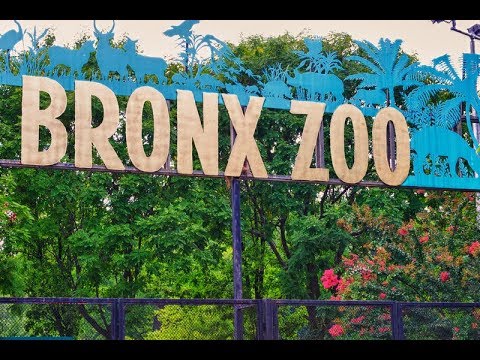
Best Camping Near North Brother Island
Nickerson beach campground.
The Nickerson Beach Campground is on Long Island, convenient to the beach and other attractions. It’s very close to Lido Beach, which is excellent for surfers. However, it’s only open from April to November.
There are 74 gravel sites, 66 of which have sewer. All spaces have electricity and water, and the current rate is around $71/night.

Battle Row Campground
This 44-acre campground lets you be close to commuter trains to New York City while enjoying a relaxed environment in Nassau County. They have 52 asphalt RV sites and 12 tent camping areas.
The Battle Row Campground is open year-round, but rentals are by reservation only. The last reported price was $29/night.
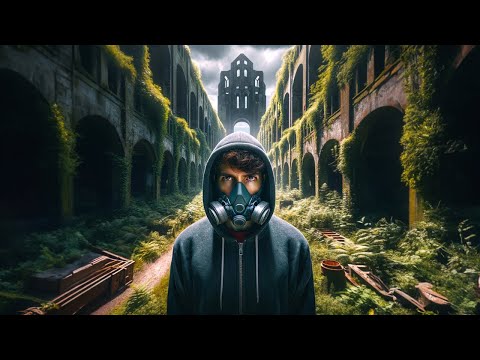
From Sickness to Sanctuary
North Brother Island is a small piece of land that holds a staggering tally of sicknesses. Photographers have been inside and posted photos that capture the eerie beauty that so often accompanies abandoned places.
For now, only the birds get close-up looks at the sites there.
Fortunately, the Bronx is rich with other places to visit, including a cottage where Poe lived and one of the world’s most famous zoos. Plus, you can camp in Poe’s healing Bronx air while still being close to the city.
Have you ever visited the Bronx? Tell us about your experience!
Discover the Best Free Camping Across the USA
To be honest with you, we hate paying for camping . There are so many free campsites in America (with complete privacy).
You should give it a try!
As a matter of fact, these free campsites are yours. Every time you pay federal taxes, you’re contributing to these lands.
Become a FREE CAMPING INSIDER and join the 100,000 campers who love to score the best site!
We’ll send you the 50 Best Free Campsites in the USA (one per state). Access the list by submitting your email below:
- Our Editors
- Staff Fall 2019
- Staff Fall 2018
- Staff Fall 2016
- Staff Fall 2014
- Staff Fall 2012
- Staff Fall 2011
- Staff Spring 2011
- Staff Fall 2010
- Staff Spring 2010
- Staff Fall 2009
- North Central Bronx
- Northwest Bronx
- Southern Bronx
- Public Safety
- Housing Injustice
- Inequity in the Greenest Borough
- Sizing up Stop and Frisk
- The 12 Percent
- Risky Real Estate
- Toxic School
- Hate Crimes
- Election 2010
- Food and Beyond
- Health Care Reform
Access to North and South Brother Islands still in question
by Savannah Jacobson
North and South Brother Islands from Barretto Point Park. The North is on the right closer to the foreground, the South, slimmer than its kin, is on the left. Photo credit: Savannah Jacobson
The East River is peppered with small islands filled with larger-than-life New York City history.
Two of them sit at the northern mouth of Hell Gate, a stone’s throw away from Barretto Point Park in Hunts Point. They provide some of New York City’s most enigmatic storytelling: in the north lies the old hospital that once housed Typhoid Mary, and the southern island harbored rum runners during Prohibition.
Today, if any Bronx adventurer wants to visit North or South Brother Island, they’ll probably have to find a Parks Department-approved scientist with spare room in their kayak. An eagerness to find the elusive northern dusky salamander , or being deemed the Greenest New Yorker by the state government might also help. Erik Baard, a regular explorer of South Brother Island and founder of environmental group HarborLAB, falls into both camps.
To adventurers like Baard, the island’s allure remains about the scrappiness required to get there. In the mid-2000s, he bonded with a Parks Department official over their search for the rare swamp-loving salamander. Now, all he needs to get to South Brother Island is some advanced notice.
“In the early days it was a little bit more radical seeming,” said Baard. “But now I’m 50 and I have white hair, and they know I’ve been doing it, so it’s fine.”
The twin isles reside between Rikers Island and the Bronx mainland, their upkeep reliant on a mired-down government that wrestled the land out of the hands of New York elite.
While North Brother Island has been uninhabited since 1963, only a scarce few have seen South Brother Island’s light of day since 1909.
The city has intended to make North Brother Island publicly accessible for decades, but the effort has stalled—the Parks Department only allows for visitation from academics and scientists. And South Brother Island remains strange and vacant, a land strictly reserved for some of the East Coast’s most exotic fauna, or the occasional message in a bottle.
On one of his earliest ventures, Baard discovered a bottle with a note inside dating back to the ‘80s.
“He had thrown it from Hunts Point,” said Baard. “It washed up on the island and stayed there. That’s how stable things were before Hurricane Sandy, it hadn’t left the East River for 30 years.”
Indeed, stability defines the history of South Brother Island.
In the early 20 th century, Col. Jacob Ruppert, a brewer and owner of the New York Yankees, owned the island. Stories of booze smuggling in the ‘30s run rampant, but the island’s reigning tale surrounds the intrigue that stems from its emptiness.
Meanwhile, North Brother Island’s history is colored with tumult and tragedy, until it reached its final fate: entanglement in the nests of bureaucracy.
Parks Department sign in Barretto Point Park commemorating the shipwreck. Photo credit: Savannah Jacobson
In 1904, a steamship carried German churchgoers from the Lower East Side to Long Island for a Sunday School jaunt. Somehow, a spark lit in a storage room that kept barrels of oil. The fire spread through the ship just as it reached Hell Gate. The ship captain hurtled forward to North Brother Island, but over a thousand passengers had already perished.
Several years later, Mary Mallon, an Irish immigrant working as a cook, tested positive for tuberculosis. The Department of Health forced her into quarantine on North Brother Island where, apart from a five-year reprieve, she would live the rest of her life in isolation. The lore of Typhoid Mary’s quarantine attracts the city’s lovers of all things creepy, medical, and abandoned.
An illustration of Mary Mallon featured in a 1909 edition of defunct newspaper “New York American.” Photo credit: Museum of the City of New York, on Instagram
Still etched into the walls of a decrepit hospital lie an inmate’s infamous words: “Help me I am being held here against my will.”
A haunting wall carving in an abandoned hospital on North Brother Island. Photo credit: Ian Ference/The Kingston Lounge
Following the close of World War II, the city rotated through purposes for North Brother Island, from veteran housing to youth rehabilitation centers, until finally shuttering everything in 1963, vacating the island indefinitely and leaving behind 26 empty structures.
Now, after sitting uninhabited for decades, traveling to North Brother Island requires good timing, a permit from the Parks Department, and an advanced degree or elected position.
“We are currently only accepting requests to visit with a rigorous academic focus and institutional association,” said Parks Department analyst Tely Renata. All visitors are prohibited during bird nesting season, from late March to late September.
This restrictiveness contrasts the political rhetoric surrounding North Brother Island.
“What’s wrong with making North and South Brother Islands accessible?” asked Bronxite Jonathan Marin in a Facebook group.
The answer? It depends on who you ask.
Councilman and former parks chair Mark Levine visited the island in 2014, setting off rumors about North Brother Island opening to the public.
“I hope you wouldn’t have to be a city councilman to see this,” he told Gothamist at the time.
Levine’s visit coincided with a periodic study from the University of Pennsylvania’s School of Design to create a responsible plan that would allow for public visitation. The study, released last year, exposed the tension at the heart of the fight over who gets to visit North and South Brother Islands: ecologists are concerned with environmental protection and preservation, while community groups see opening the island as a way to increase access to green space and potentially provide jobs in the South Bronx.
“I am very much opposed to making North and South Brother Island any sort of public park,” said Baard. “I think we’ve eaten up enough land in New York City as a species. I think it’s not asking too much to leave some of it aside for other species.”
At the same time, Baard is sympathetic to the lack of reachable green spaces in neighborhoods like East Harlem, where Randall’s Island is counted as open space: “That’s obscene in a lot of ways to say, ‘Don’t worry, you’ve got your green space, just walk all the way there.’”
The University of Pennsylvania study ultimately recommended a trial period of limited and controlled public access.
“It requires thinking in different terms about what open to the public means,” said Randall Mason, the study’s principal investigator and Associate Professor of historic preservation at the University of Pennsylvania. “It would certainly be seasonal and that’s in keeping with the ecological preservation imperative. It would mean to be deliberate and intentional about the usage of the park.”
Since the study was published, the city has not shown much progress in opening the island. Still, Mason has faith that the Parks Department and a coalition of private partners will find funding for a successful pilot period of public access.
“Parks funding will always be the bottleneck. As long as that could be solved, there are avenues that could be explored.”
Signage in Barretto Point Park from a coalition of groups that helped New York City purchase South Brother Island. The island can be seen on the left. Photo credit: Savannah Jacobson
As for South Brother Island, the Trust for Public Land, a conservation non-profit, negotiated the land from private ownership into full oversight by the Parks Department in November 2007. U.S. Rep. José Serrano, whose district includes the islands, worked with a coalition of environmental-minded nonprofits to secure $2 million in federal grant funds to facilitate the land transfer and preserve the island as a bird sanctuary.
For now, in a borough where locals’ needs are rarely met and on two islands that have lived in obscurity for centuries, it seems that even more so than lacking a PhD in marine biology, boating equipment, or wings, public opinion and bureaucracy are still the biggest impediments to ever reaching the islands.
Baard doesn’t see the problem. Some places, he says, should be left untouched.
“I don’t romanticize things as much.”
Mapping inequity
More stories.

- New Construction + Condos
- Affordable Housing
- Negotiating + Financing
- How to Buy in NYC Guide

- Roommates + Landlords
- How to Rent in NYC Guide

- Staging + Open Houses
- Negotiations + Closings
- Getting Ready
- How to Sell in NYC Guide

- Kids + Pets
- Neighborhood Intel
- Products + Test-drives
- Troubleshooting

- Small Spaces
- Small Projects + DIY
- Renovations
- Design + Architecture
- Products + Services
- How to Renovate in NYC Guide
- Boards & Buildings
- Property Management
- Structure & Systems
- Sustainability

- Advertise with us
- Sponsored Content

Find Your Next Place
Long off-limits, North Brother Island may finally open to the public
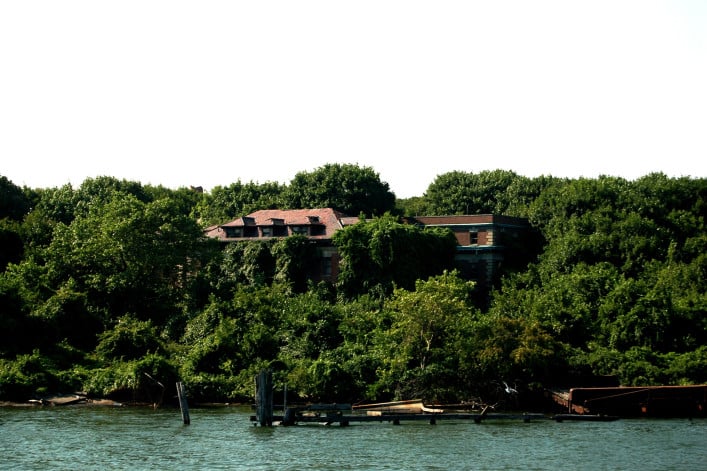
We recently explored the history of Hart Island , a speck of land north of City Island that's home to the city's largest potter's field; after several decades, it has recently begun accepting visits from the public. Now, it looks as though the city may open yet another long-mysterious islet to visitors.
Abandoned since 1963, North Brother Island could soon be opened on a limited basis to curious urban explorers, reports New York magazine . The City Council is working on a proposal to allow New Yorkers to check out the 20-acre space, which sits in the East River between Port Morris in the Bronx and Rikers Island.
First, though, the island needs a serious revamp: Its buildings have descended into decrepitude, and falling debris poses hazards to passersby. And on a less dangerous, but potentially unpleasant level, the area is also choked with vegetation, including poison ivy.
A history of illness
But what the island's buildings once housed is part of its draw, especially if you're a New York history buff. Like several of the city's other islands—including Hart and Roosevelt—North Brother's relative isolation made it the ideal place to build hospitals. Atlas Obscura recounts how the uninhabited island was purchased by the city in the late 1800s to erect Riverside Hospital, a facility for New Yorkers with contagious illnesses.
The hospital's most notorious patient was Mary Mallon, aka "Typhoid Mary," an asymptomatic carrier of the bacteria that causes typhoid fever. Due to her work as a cook, Mallon quickly spread the often-fatal disease among the families who employed her; the city ultimately quarantined her on North Brother Island, where she remained until her death about 23 years later. (Radiolab produced a podcast about Mallon's fascinating story, which you can listen to here .)
But even before Mallon's tragic end, North Brother Island was touched by disaster. According to the New York Public Library , on June 15, 1904, the PS Slocum, a boat chartered for a day trip around the city, caught fire. Passengers had to choose between plummeting into the East River or remaining on board, and over 1,000 people died. The captain steered the ship to North Brother Island, where it sank, though both employees and patients of the island's hospital helped pull survivors ashore.
(Not just) for the birds
Riverside Hospital closed not long after Mary Mallon's death; the island then became home to World War II veterans who were studying at city universities. In the 1950s, it housed a drug rehab facility for adolescents addicted to heroin, but in 1963, the New York article notes, it was closed due to corruption. Since then, the island has remained vacant, save for the occasional (and illegal) presence of intrepid visitors, and colonies of herons, egrets, and other birds .
Aside from becoming a wildlife sanctuary, nature has taken over in other ways. Back in 2011, blogger Richard Nickel, Jr. of the Kingston Lounge took a trip to the island—it's reachable by canoe, but note, it is legally off-limits—and found the island's properties in a state of advanced decay:
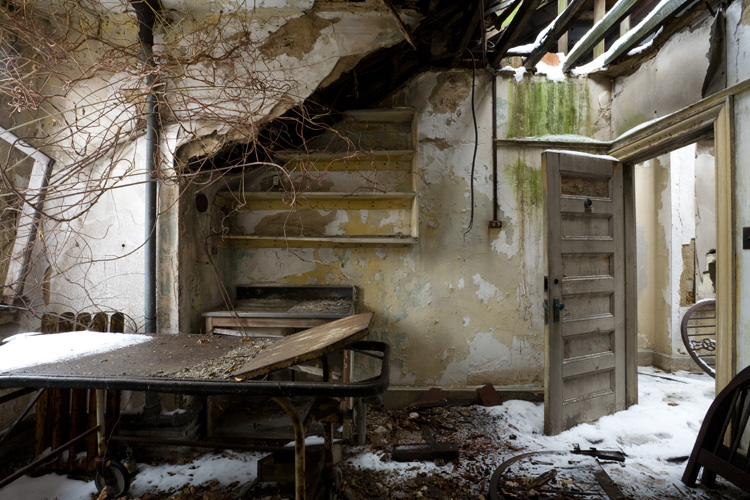
An examination room of the former hospital, via The Kingston Lounge
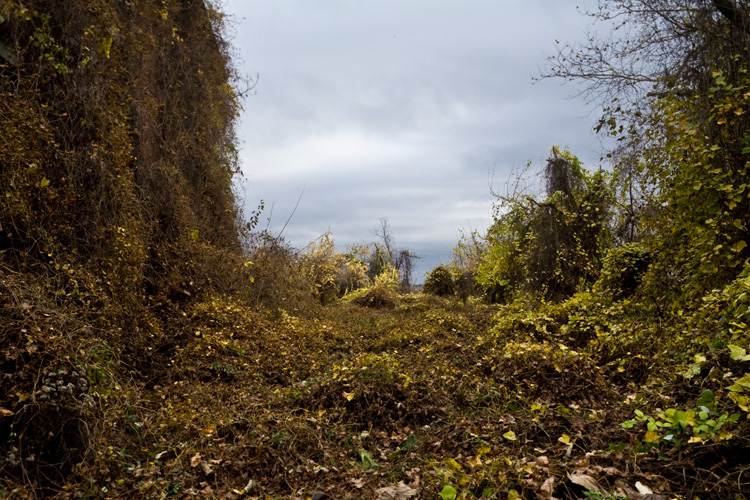
The hospital facilities are overgrown with kudzu in many places. The Kingston Lounge
The BBC reported on the island's history in 2014, and you can see many more images in the video below.
It's clear that North Brother Island requires a lot of TLC before it's ready to welcome New Yorkers: according to New York , the island needs a new dock, as well as significant repairs and restorations of its buildings, before the Parks Department is prepared to break its 50-plus years of isolation.
You Might Also Like
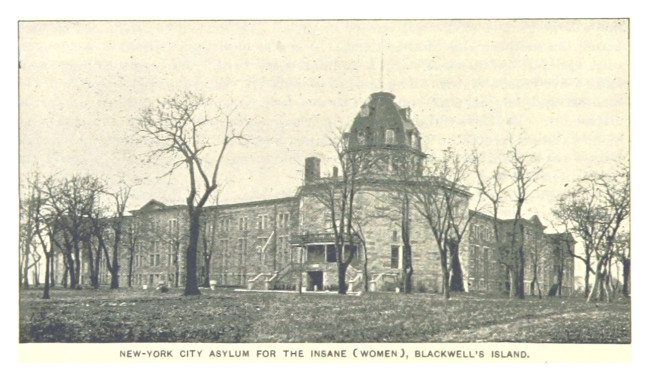
Alanna Schubach
Contributing editor Alanna Schubach has over a decade of experience as a New York City-based freelance journalist.
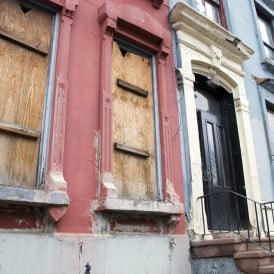
There's a mysterious, abandoned island less than a mile from Manhattan and almost no one is allowed to visit — here's what it's like
- North Brother Island is a 22-acre piece of land in New York City that has been abandoned since 1963.
- The island, which is next to the infamous Rikers prison, was a quarantine location 150 years ago.
- Business Insider visited the island and photographed the dilapidated state of its 25 buildings.

Less than a mile from Manhattan — one of the priciest and most densely populated places in the world — sits North Brother Island, a mysterious island that people abandoned more than half a century ago.
New York City owns the 22-acre plot, which pokes out of the East River between the South Bronx's industrial coast and a notorious prison: Rikers Island Correctional Center.
It's illegal for the public to set foot on North Brother Island and its smaller companion, South Brother Island, without permission from the New York City Department of Parks and Recreation. Even then, access is only granted in rare cases . Even birds seem to avoid its crumbling, abandoned structures.
In 2017, producers for the Science Channel obtained the city's permission to visit North Brother Island, and the crew invited Business Insider to tag along. The story of our small expedition premiered in season four of " What on Earth? " a popular TV show about satellite images. (Our segment closes out episode 12 .)
Here's what we saw and learned while romping around one of New York's spookiest and most forgotten places.
North Brother Island is accessible only by boat. Leaving from Barretto Point Park in the South Bronx is one of the quickest ways to get there.
Watch your step — the boat ramp is covered in slippery algae at low tide.
This small aluminum boat was our ride.
The East River was crawling with police, probably because Rikers Island Correctional Institute is less than a mile away — and they are wary of anyone visiting North Brother Island.
No one is permitted to visit the island without permission from the New York City Department of Parks and Recreation, which manages the site as a bird sanctuary. One of their escorts also has to tag along everywhere you go.
Source: NYC Parks
Pulling up to the island, we navigated around rotten dock supports. The ferry dock and its rusted derrick looked ready to collapse at any moment.
The island was first claimed in 1614 and inhabited in 1885, and its history is checkered with death, disease, and decay.
In June 1904, for instance, a steamship called the General Slocum burst into flames and sank in the East River. Though 321 people survived, the bodies of 1,021 passengers who died washed ashore for days.
Source: New York Public Library
The arc-shaped Hell Gate Bridge on the East River is visible from North Brother's western shore.
The island's buildings used to run on a coal-fired power plant. Workers loaded the bituminous fuel onto this dock — but during our visit, it was sinking, covered in kelp, and totally submerged at high tide.

Sea levels could rise by as much as 2.5 feet in the next 35 years around New York City. If and when a large hurricane rolls through as the waters rise, the surges will swallow the island's habitats, ecology, structures, and history.
Source: Business Insider
After we arrived on shore, we stowed camera equipment, food, and other supplies inside this old transformer vault.
It was falling apart, like everything else on the island, but was one of the most stable structures with a functional roof — and rain clouds immediately began to threaten our day trip.
Streets and sidewalks are almost unrecognizable due to the overgrowth.
But there are signs of previous habitation everywhere, like this corroding trash can.
Invasive kudzu vines, which come from Asia, crawl and infiltrate many nooks and crannies of the island.
The island sub-canopy is covered in native plants both small and impressively large.
One of the first buildings I saw was the morgue, seen right. The fractured chimney of a coal-fired boiler room, seen left, is also visible from miles away.
At every turn, the decay is both eerie and beautiful.
Parks and Recreation officials do not let anyone into most buildings, since they are in a dangerous state of disrepair.
You have to look where you're going, or you'll run into spider webs big enough to boggle the mind.
From the 1880s through 1943, the city quarantined people sick with highly contagious diseases on the island, including the infamous "Typhoid Mary" Mallon. Those who died were stored in the morgue.
Much of the equipment was left when inhabitants abandoned the island in 1963.
But signs of illegal visitation are peppered about, including this graffiti on a wall ball court.
Some facilities are almost unrecognizable. Ivy has completely choked out this double tennis court.
Rather than take the ferry each day, some hospital workers opted to live in the Nurse's Home. Bathtubs have fallen through the ceiling of the 40,000-square-foot Victorian-style mansion, which was built in 1905.
Coal-fired steam heated many of the island's dwellings.
The Staff House is one of the oldest and most dilapidated structures. It was constructed in 1885.
During our 2017 visit, it looked ready to collapse.
Further down the main road is the Male Dormitory.
It was also built in 1885, and has trees growing through its roof.
The dormitory became a nursery school for veterans' families who lived on the island during the post-World World II housing crisis, from 1946 through 1951.
After 1951 and until the island's abandonment, the building was used as a drug rehabilitation center.
So many structures hide among the wild vines, trees, and fronds.
It feels like wandering around an post-apocalyptic playground at times.
Few animals seem to live here, and a Parks and Recreation official said that mammals are practically nonexistent — no rats, chipmunks, or mice.
The largest building on the island was one of the last to be completed: the Tuberculosis Pavilion.
It is a sprawling four-story, 83,000-square-foot building that was designed to house people sick with tuberculosis, but then World War II broke out.
The $1.2 million facility was finished in 1943 and never treated a tuberculosis patient; instead, it housed World War II veterans.
It is a large, looming, and creepy building that we wanted to explore, but couldn't.
But like at many of the structures, we were able to peek through broken or missing windows.
The south end of the tubercular ward had a kitchen.
The island is a place few people would dare spend a night on, but it seemed more sad than spooky to me the more I explored it.
The structures, like the Physician's Home, built in 1926, were on the verge of collapse during our visit. But they were probably once beautiful, and might have even been useful today — had they been maintained.
The island struggled to find its purpose after a tuberculosis vaccine emerged in 1943, and soldiers found places to live on the mainland.
Owners of the island tried to reinvent it as a rehabilitation camp for troubled teens, from 1952 through 1963. But patients didn't get the help they needed when returning home after three- to five-month stays. The program was considered a failure.
Everyone left in 1963, and then the city took custody of the island. A lack of close management made it a looting grounds for vandals. To this day, the city has yet to figure out if and how it will let the public set foot there again.
North Brother Island might never reopen to the public, though: It's ground-zero for rising sea levels and storm surges. According to extreme climate-change projections, it may be entirely underwater by 2100.
This story is an update to the original version published on October 8, 2017.
- Main content

19 Places That People Are Forbidden to Visit
F or the most part, the world is your oyster. However, some places exist in the world that people are forbidden to visit. Some governments ban places because they’re dangerous to people, or humans are dangerous to the animals and habitats nearby. Others hold secrets governments and individuals definitely want to keep from the public.
If you want to learn more about these forbidden places, you’ll have to keep reading below.
1. Ducle Base
This article is starting with a pretty controversial one. Certain groups claim that under Dulce, New Mexico, there’s a hidden base for the US government. According to conspiracy theorists, there’s a compound somewhere near the town that is host to all sorts of experiments, or even aliens. If true, it would be the ultimate forbidden place.
2. Poveglia Island
This island has a heavy history filled with death. It was once used as a quarantine station for the plague, holding over 160 thousand people on the island. In 1922, Italy used the island as a mental hospital. There were rumors it was corrupt and the doctors often tortured the inhabitants. It’s one of the most haunted places on earth, and the soil is at least 50 percent human remains, according to certain statements.
3. North Brother Island
Like Poveglia Island, North Brother Island started as a quarantine hospital. The United States designated the island for those with typhoid and was home to Typhoid Mary. Then, it became a rehabilitation center. After the center was shut down, North Brother Island became a bird sanctuary.
4. Heard Island
There are two volcanoes, still active, on Heard Island. But that’s not what makes the island forbidden. The island is protected as a nature reserve. The government only allows people to visit the island for scientific research.
5. Bohemian Grove
Bohemian Grove is 2,700 acres. It’s an extremely private gentleman’s club where some of the most prominent men in the world get together and talk. Friends and family members are allowed on occasion, but they must follow the rules closely and be off the property by a specific time.
6. Ise Grand Shrine
To protect this temple, only the royal family is allowed to enter, and only on rare occasions. There is one other exception. About every 20 years, the temple is rebuilt to maintain its strength and Shinto traditions.
Area 51 isn’t entirely forbidden. No standard citizen has a chance of entering the gates. Only specific government bodies, like high-level scientists and the military, are allowed in the base. Rumors say that the base is home to new weapons for the army, or perhaps a site for extra-terrestrial research.
8. Snake Island
This is an island you probably wouldn’t want to go to, even if you could. The Brazilian government has banned travelers due to how deadly the island is. This island earned its name by having the highest concentration of pit vipers in the world.
9. Surtsey Island
The reason Surtsey is forbidden is because of its scientific significance. It’s the newest landform in the world created by volcanoes, breaking the surface in the 1960s. Only scientists researching the island have permission to visit.
10. Tomb of Qin Shi Huang
There is still a lot to discover about this tomb and the soldiers that have remained standing for over 2,000 years. To respect the site, the Tomb Qin Shi Huang has been blocked by the government and no excavation is allowed.
11. The Vatican Secret Archives
The Vatican Secret Archives aren’t actually a secret. They’re just incredibly private. The archives hold all sorts of information related to the Pope and the history of the church and religion. The Vatican permits some researchers and members of the church, but that’s it.
12. Gruinard Island
The government bought Gruinard Island with the specific purpose of testing war weapons. Specifically, they tested a form of anthrax on the island. Though the weapons ended up never being used in the war, the weapons were tested on the island. The island is supposedly safe now , but is still not open to the public thanks to a private buyer.
13. Niihau Island
There are roughly 160 people on Niihau island, but only this group of people and the US Navy are allowed on the island. The owners of the island promised to use the land to protect the traditional Hawaiian language and culture.
14. Pravcicka Brana
The Pravcicka Brana is a naturally formed arch. It used to be a huge tourist attraction. However, the constant walking over the arch by tourists has eroded the structure. It’s ready to collapse at any time, and due to the danger, is forbidden.
15. Coca-Cola’s Vault
Though the vault is located in a fairly popular tourist attraction for fans of the soda, the vault itself is forbidden. This is supposedly because it’s the location of the recipe for Coca-Cola, a closely guarded secret.
16. Mezhgorye
Though this is technically just a town in Russia, it’s top-secret and forbidden to anyone not personally approved by Vladimir Putin. No one knows for sure what’s there, but some say that it’s home to nuclear weapons.
17. North Sentinel Island
North Sentinel Island isn’t home to anything secretive. However, it is very dangerous. It’s home to one of the last communities not touched by modern civilization. These people are heavily protected because they’ve gathered no immunity from our modern diseases. Interactions with the islanders could lead to a high rate of death and infection.
18. Lascaux Caves
For many archaeologists, there’s nothing more interesting than the cave paintings in Lascaux Cave. They are over 17,000 years old. The caves had to be closed off to the public as the high levels of heat and carbon dioxide in the caves damaged the paintings.
19. Svalbard Global Seed Vault
Svalbard Global Seed Vault is home to over 900 thousand seeds from all over the world. The main purpose of this storage vault is to have seeds in case humans manage to kill off all life on Earth. It’s also great for studying plants that are extinct or going extinct.
Summary of Places People Are Forbidden to Visit
Love Animals as much as we do? Make sure to Follow and Like us on MSN. Have feedback? Add a comment below!
- The 75 Most Iconic Places Around the World – In Alphabetical Order by Continent!
- 9 Absolutely Bizarre Laws in Oregon That Are Still Against the Law
- 23 Absolutely Bizarre Laws in New York That Are Still Illegal
The post 19 Places That People Are Forbidden to Visit appeared first on A-Z Animals .
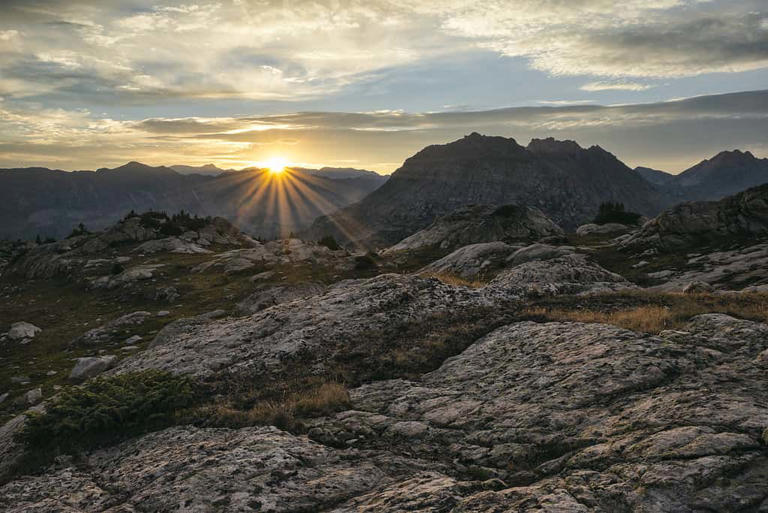

IMAGES
VIDEO
COMMENTS
The best time to visit North Brother Island is during the fall, before winter weather begins and conditions are challenging. Who May Visit. As mentioned above, Parks limits access to North Brother Island because of its difficult location, the challenging and potentially hazardous condition of the terrain and built environment, and wildlife ...
From the 1880s through 1943, New York City used North Brother Island to quarantine people with highly contagious diseases — including the infamous "Typhoid Mary" Mallon, whose asymptomatic ...
Published August 27, 2023. Updated January 21, 2024. Once the site of a sprawling quarantine compound that housed Typhoid Mary in the early 20th century, North Brother Island was abandoned in 1963, leaving its 25 crumbling buildings frozen in time. New York City is a bustling place. Everywhere you look, there are people — getting on the ...
North Brother Island, an island in the East River, is a protected area and part of the Harbor Herons Region, a nationally recognized complex of uninhabited islands and expansive marshes essential for shorebirds, located right here in New York City. ... Please review our access policies before applying for a proposed visit. Show Disclaimer. This ...
The Bronx. North and South Brother Islands are a pair of small islands located in New York City 's East River between the mainland Bronx and Rikers Island. North Brother Island was once the site of the Riverside Hospital for quarantinable diseases but is now uninhabited. [1] The islands had long been privately owned, but was purchased by the ...
FURTHER READING. Damnation Island: Poor, Sick, Mad & Criminal in 19th Century New York by Stacy Horn North Brother Island: The Last Unknown Place in New York by Christopher Payne with a history by Randall Mason The Other Islands of New York City by Sharon Seitz and Stuart Miller Ship Ablaze: The Tragedy of the Steamboat General Slocum by Edward T. O'Donnell
In the 1940s, North Brother Island was transformed into a housing center for war veterans and their families. But by 1951, most of them—fed up with the need to take a ferry to and from home ...
Discover North Brother Island in Bronx, New York: Home to the infamous "Typhoid Mary" and the worst loss of life in New York's history prior to September 11, 2001.
October 20, 2015 at 5:02 pm. Encore: April 29, 2015. Located across from The Bronx near Rikers Island, is a lesser-known land mass that you might have missed. It's called North Brother Island ...
North Brother Island is an uninhabited patch of land located smack dab in the middle of the East River between the Bronx and Rikers Island. It was the site of the infamous Riverside Hospital for ...
To visit the island you must: 1) Contact the parks department. They don't even let themselves visit the island most of the time. March to October is off limits. That's when the herons nest. 2) If the parks department gives you permission, you have to charter a boat, which can be really expensive.
North Brother Island is among the most unexpected of places: an uninhabited island of ruins in New York City that hardly anyone knows; a secret existing in plain sight. It is both part of the city and a world apart from it. Its 20 acres sit low in the East River, just north of Hell Gate, with 25 or so buildings in various states of decay.
Set sail for North Brother—a forgotten island in the midst of the Big Apple. Off the coast of the Bronx lies the last unknown place in New York City. North Brother is a 20-acre island of ruins in the middle of the East River. Cut off from the city, yet deeply connected to its history, the eerie site is rich with tales of isolation and tragedy.
North Brother Island, the 13-acre piece of land that once housed a quarantine hospital, has long been a source of fascination for urban explorers and history nerds.Abandoned since the early 1960s ...
Oct. 27, 2016. NYC's North Brother Island, Abandoned for 50 Years, Might Finally Be Opened to (Legal) Visitors. ByJen Kirby. The old gantry at North Brother, the old cargo entrance to the island ...
North Brother Island: New York's forgotten time capsule. Arun Starkey. Mon 16 May 2022 19:30, UK. Lying in the middle of New York City's East River, between mainland Bronx and Rikers Island, is a pair of largely forgotten islands that are as much of a part of the area's history as the many bridges that cross the natural harbour of the city.
North Brother Island is a secret hiding in plain sight. ... The New York City Department of Parks and Recreation agreed to grant him access on the condition that he only visit between September ...
Things To Do Near North Brother Island Visit Edgar Allan Poe's Cottage. Since you can't visit the haunting dilapidation of North Brother Island, perhaps you can console yourself with a trek to a house once occupied by American Gothic master Edgar Allan Poe. The writer moved to the cottage in 1846, hoping the then-rural country air would ...
The twin isles reside between Rikers Island and the Bronx mainland, their upkeep reliant on a mired-down government that wrestled the land out of the hands of New York elite. While North Brother Island has been uninhabited since 1963, only a scarce few have seen South Brother Island's light of day since 1909. The city has intended to make ...
Now, it looks as though the city may open yet another long-mysterious islet to visitors. Abandoned since 1963, North Brother Island could soon be opened on a limited basis to curious urban explorers, reports New York magazine. The City Council is working on a proposal to allow New Yorkers to check out the 20-acre space, which sits in the East ...
Nestled in the waters of the East River, North Brother Island is a stark contrast to the metropolis of New York City. It's a quiet, decaying relic of a bygone era. This 13-acre island is home to ...
TOUR NORTH BROTHER ISLAND. October 21, 2019 at 5:15 am. Encore: July 13, 2022. Tonight, we tour a 20-acre island near Manhattan that sits completely abandoned and closed off to visitors, without ...
North Brother Island is a 22-acre piece of land in New York City that has been abandoned since 1963. The island, which is next to the infamous Rikers prison, was a quarantine location 150 years ago.
North Brother Island Like Poveglia Island, North Brother Island started as a quarantine hospital. The United States designated the island for those with typhoid and was home to Typhoid Mary.